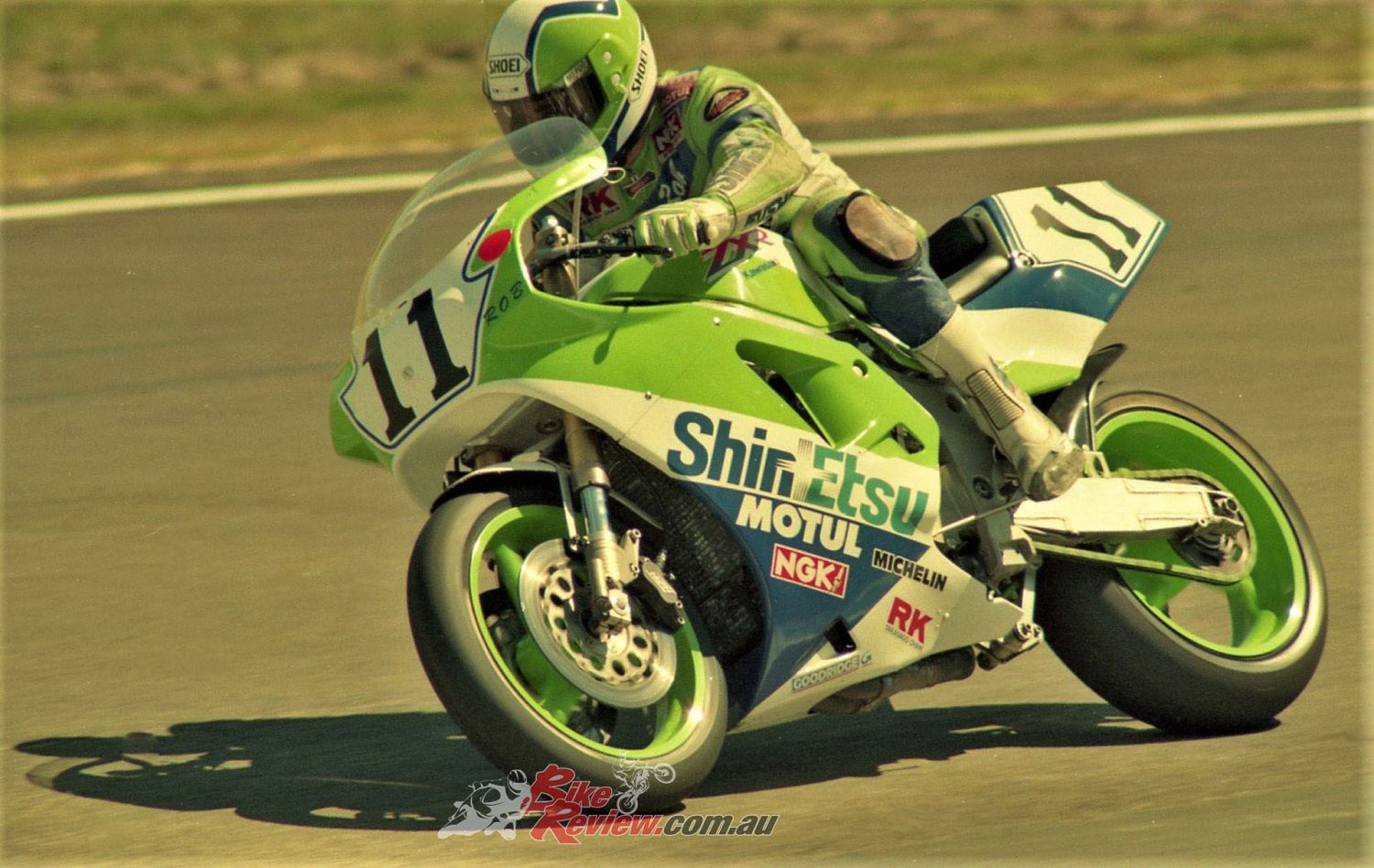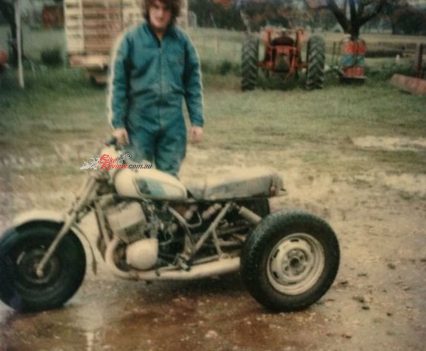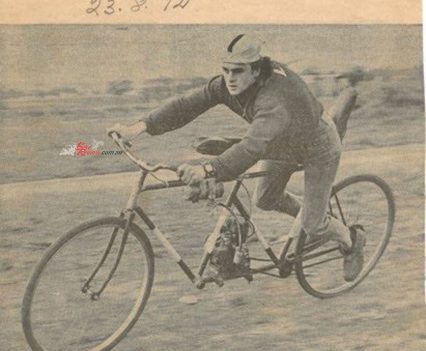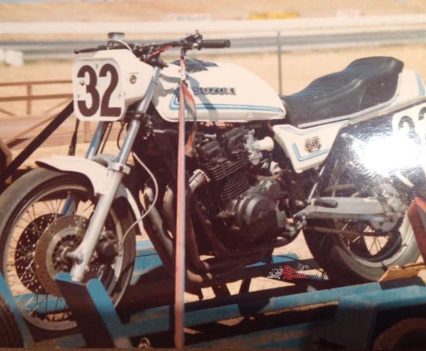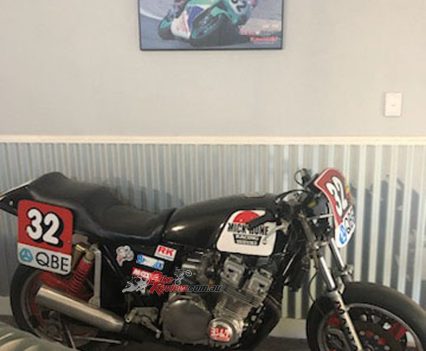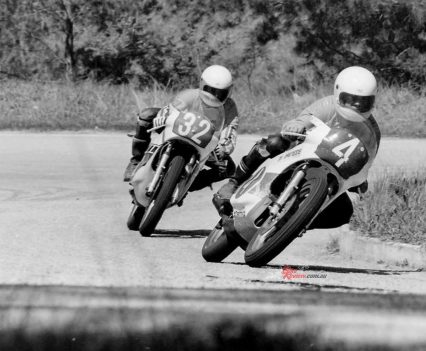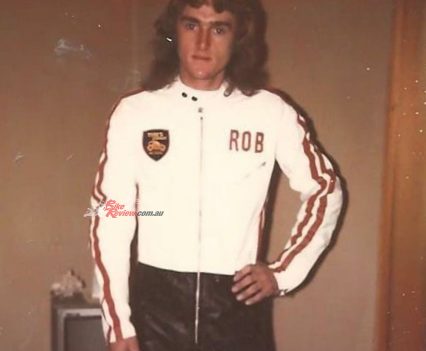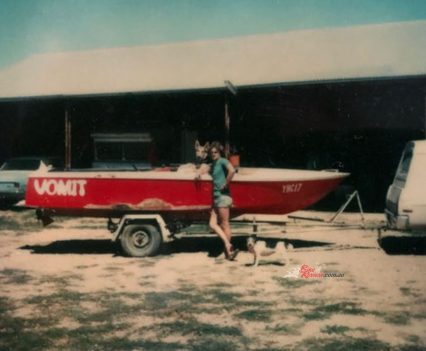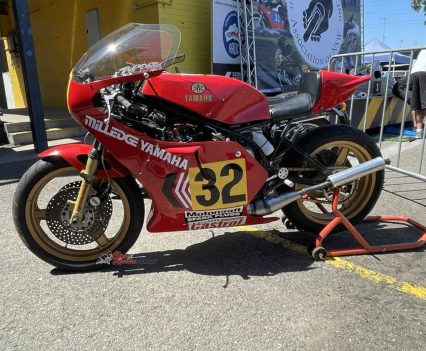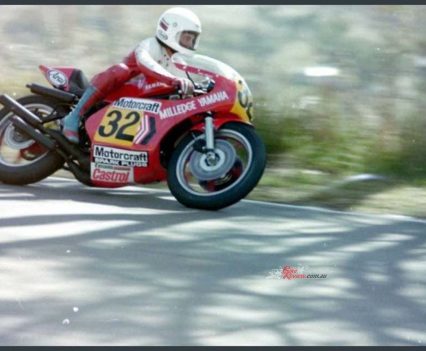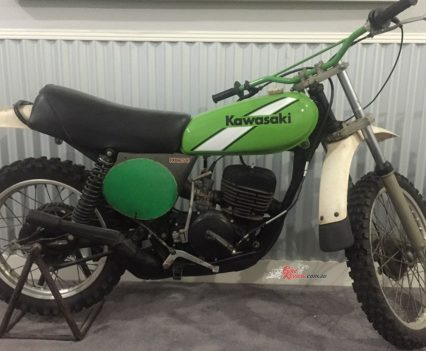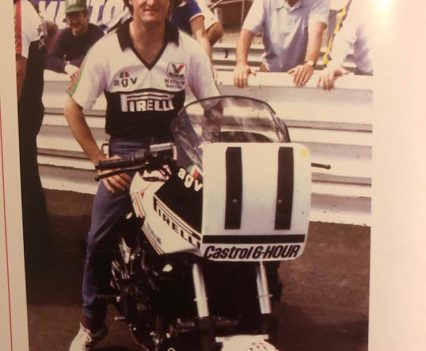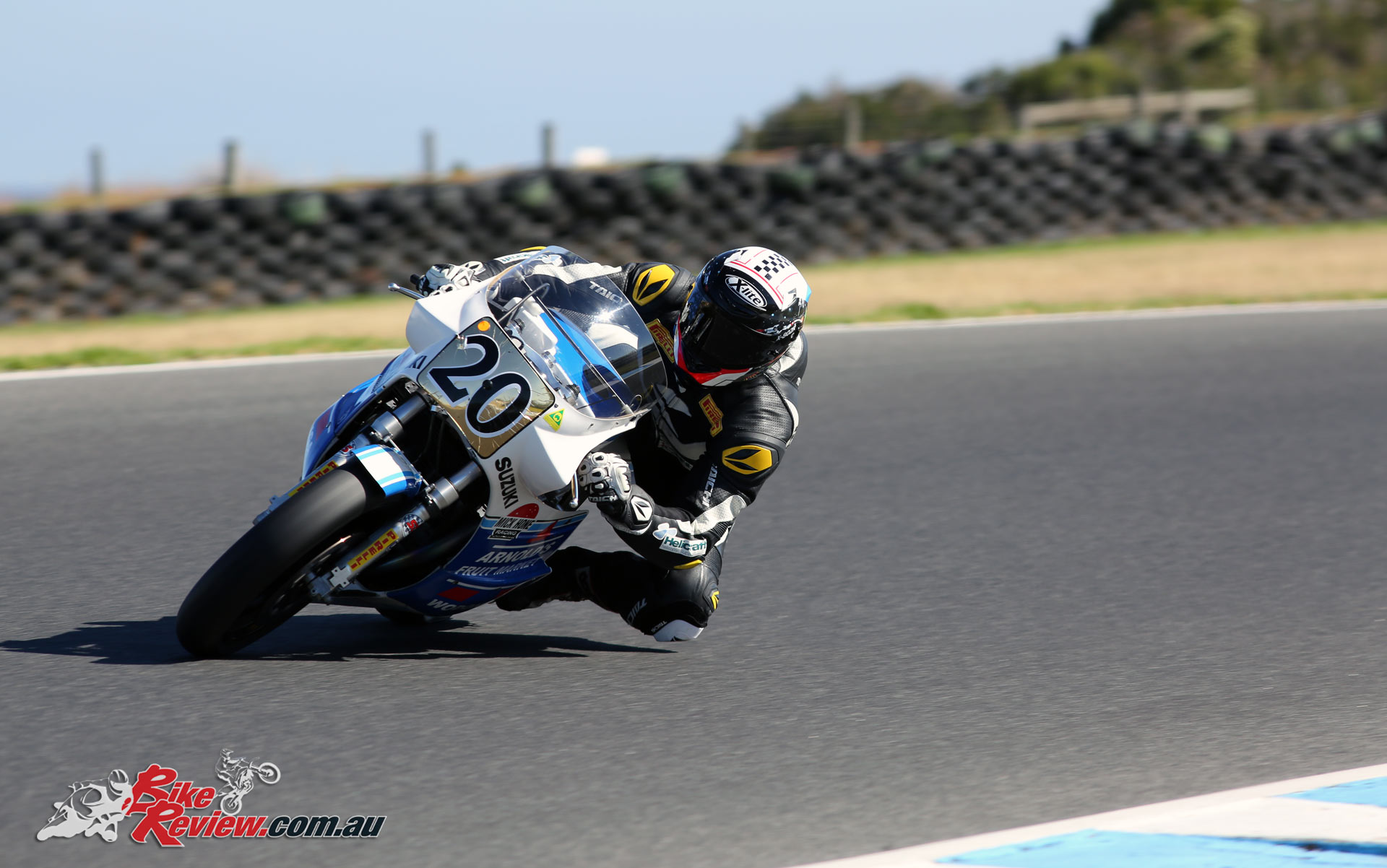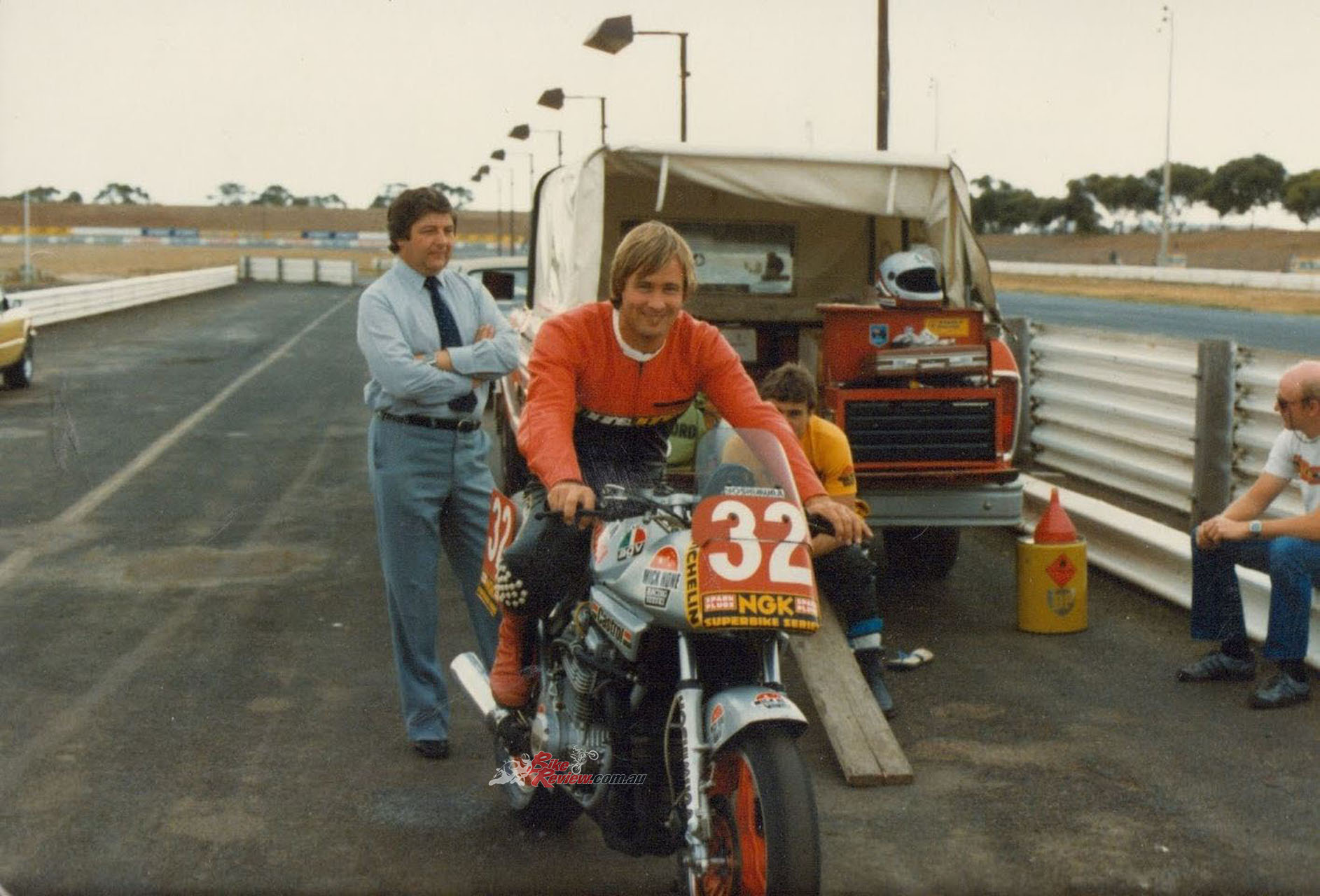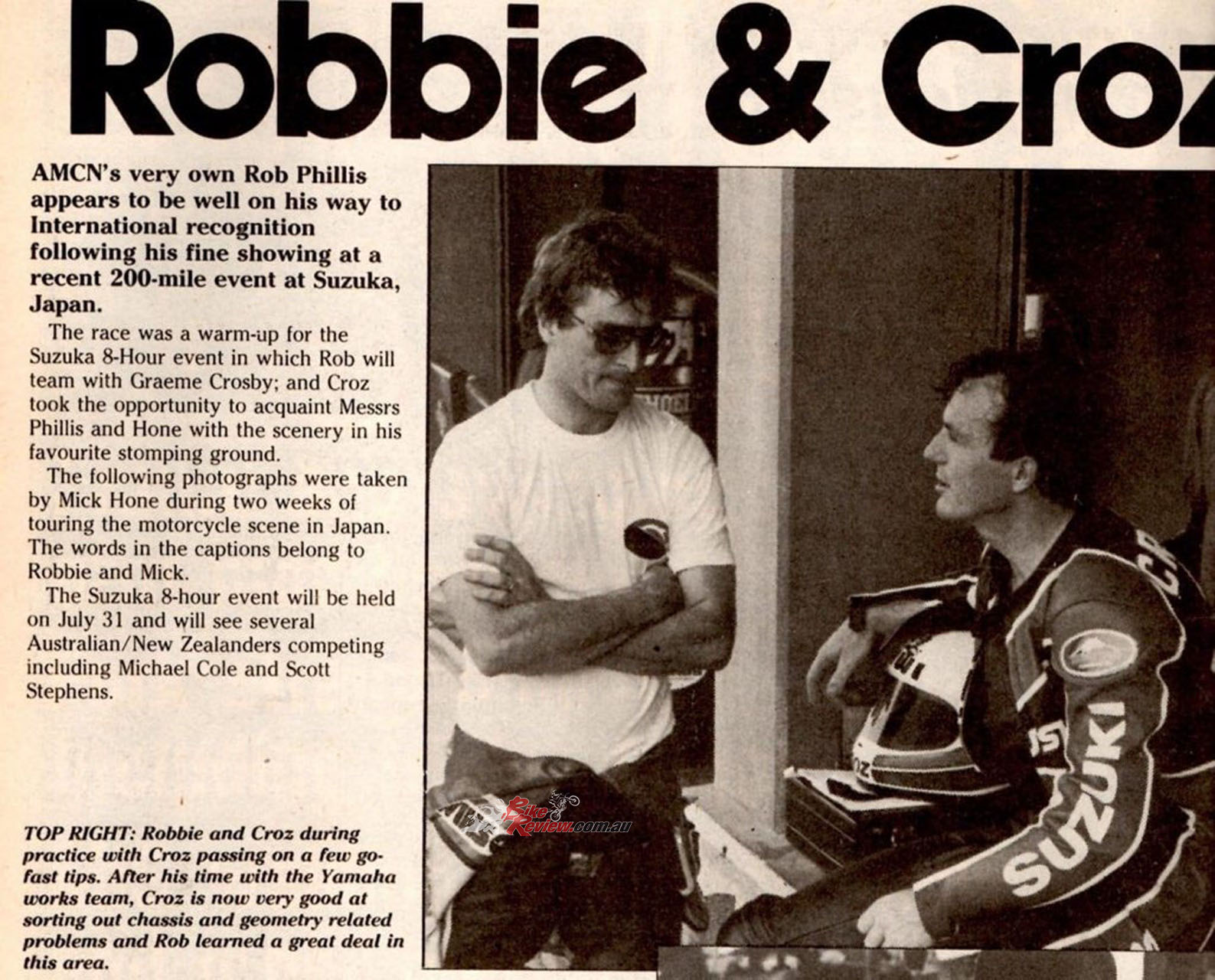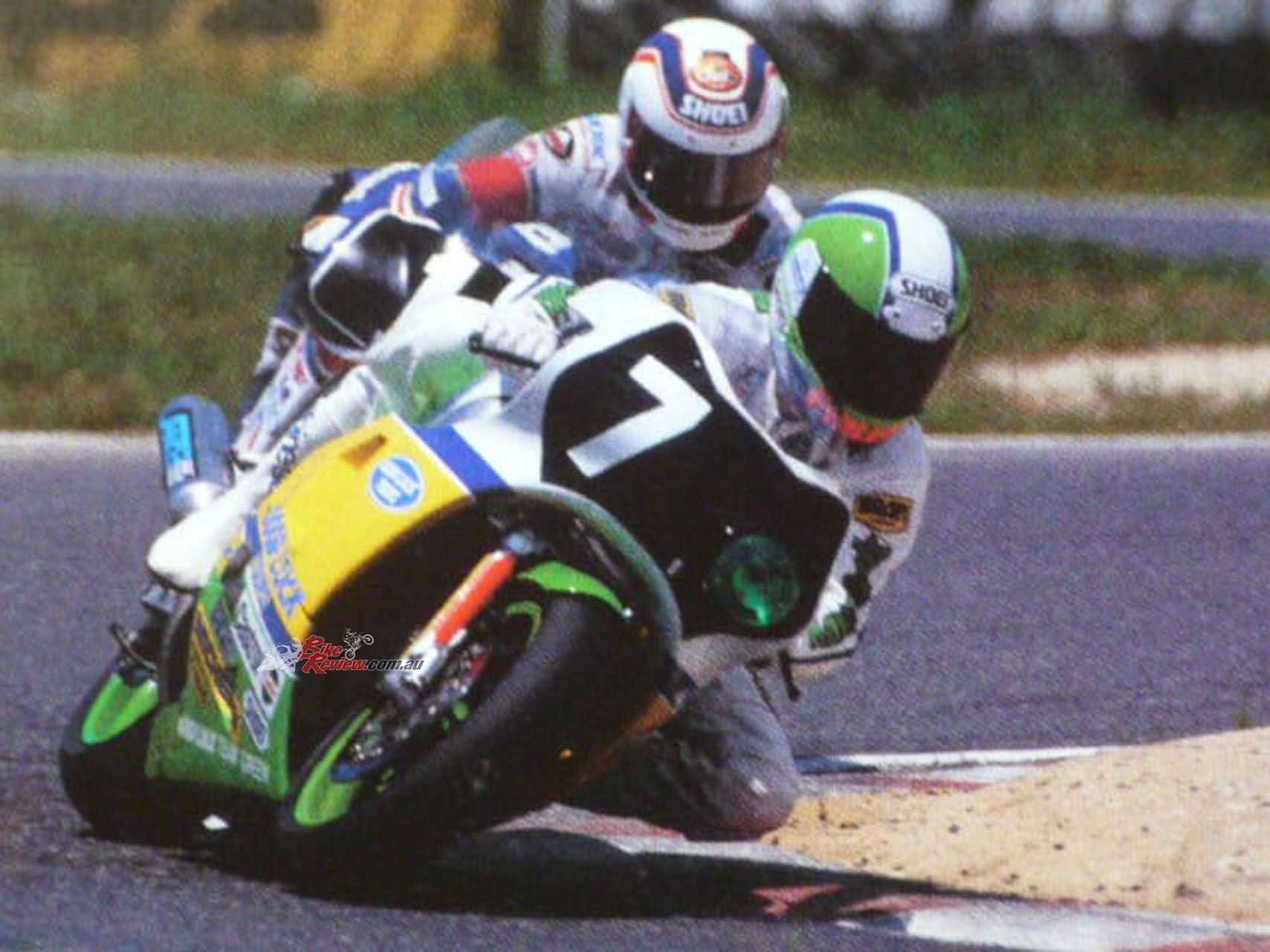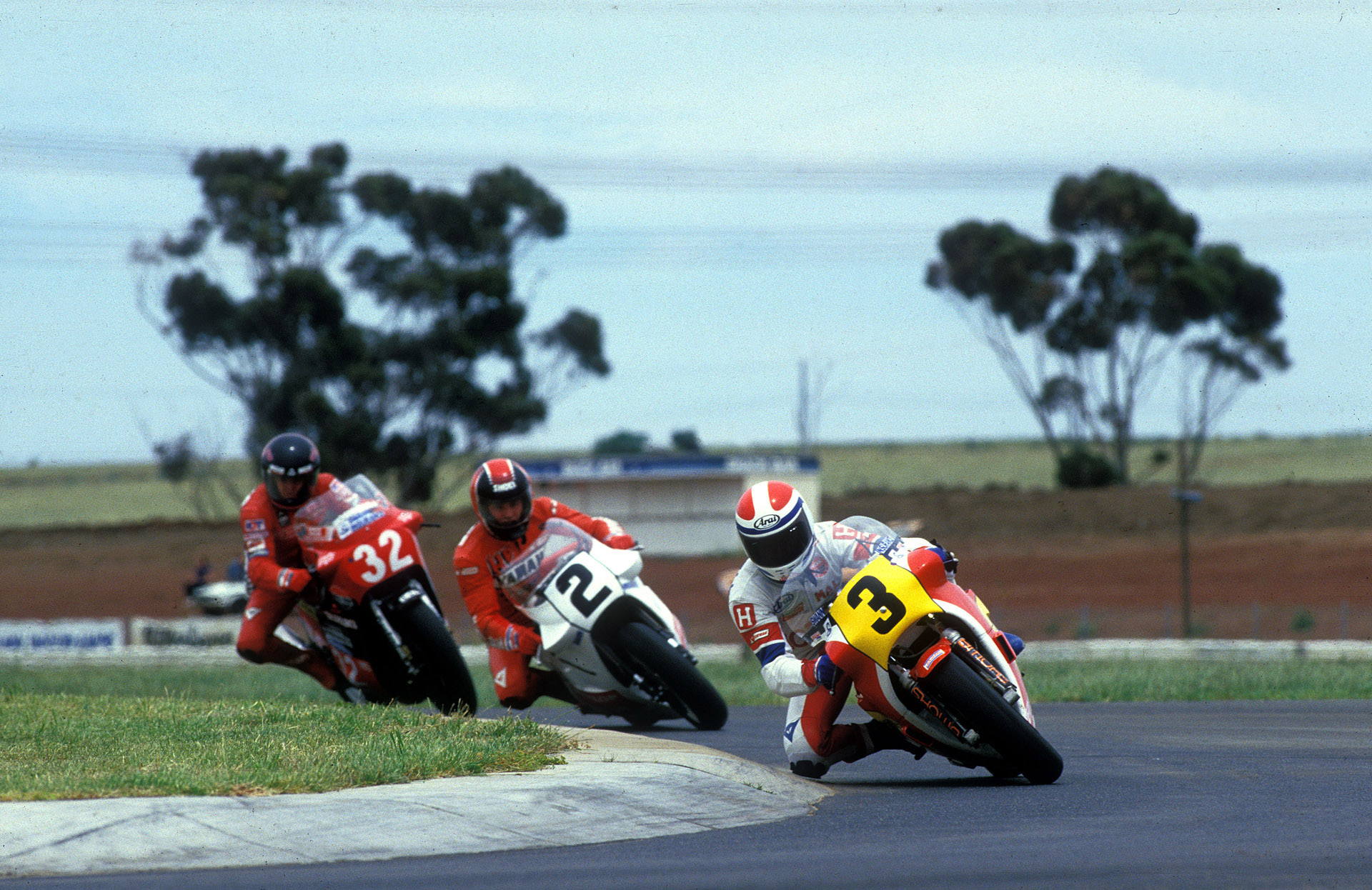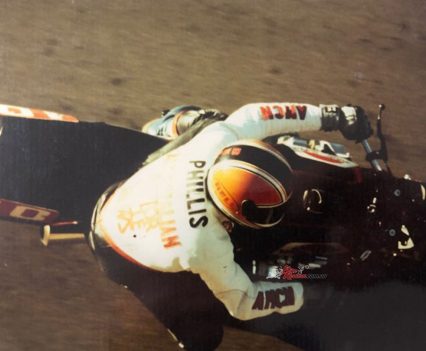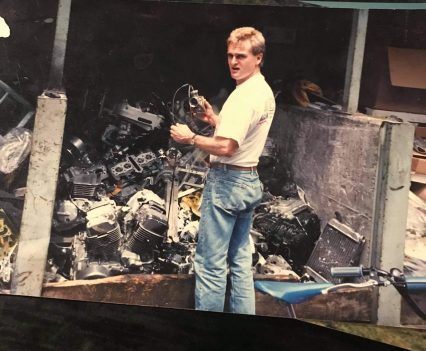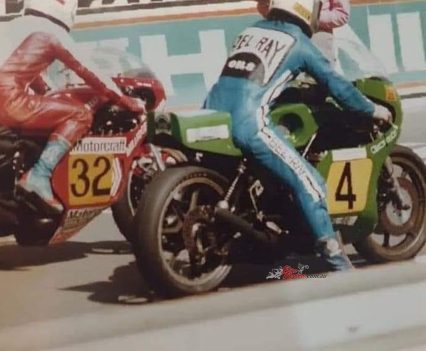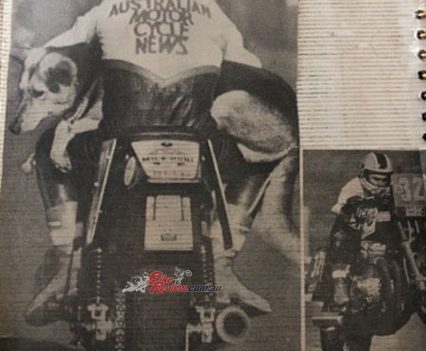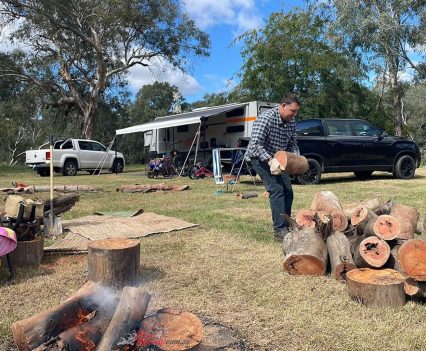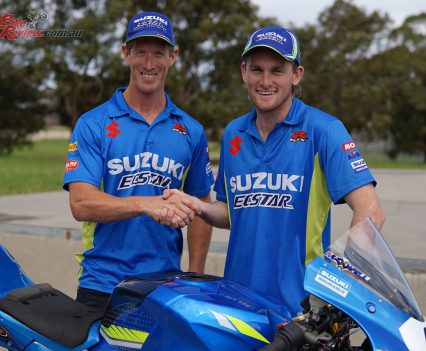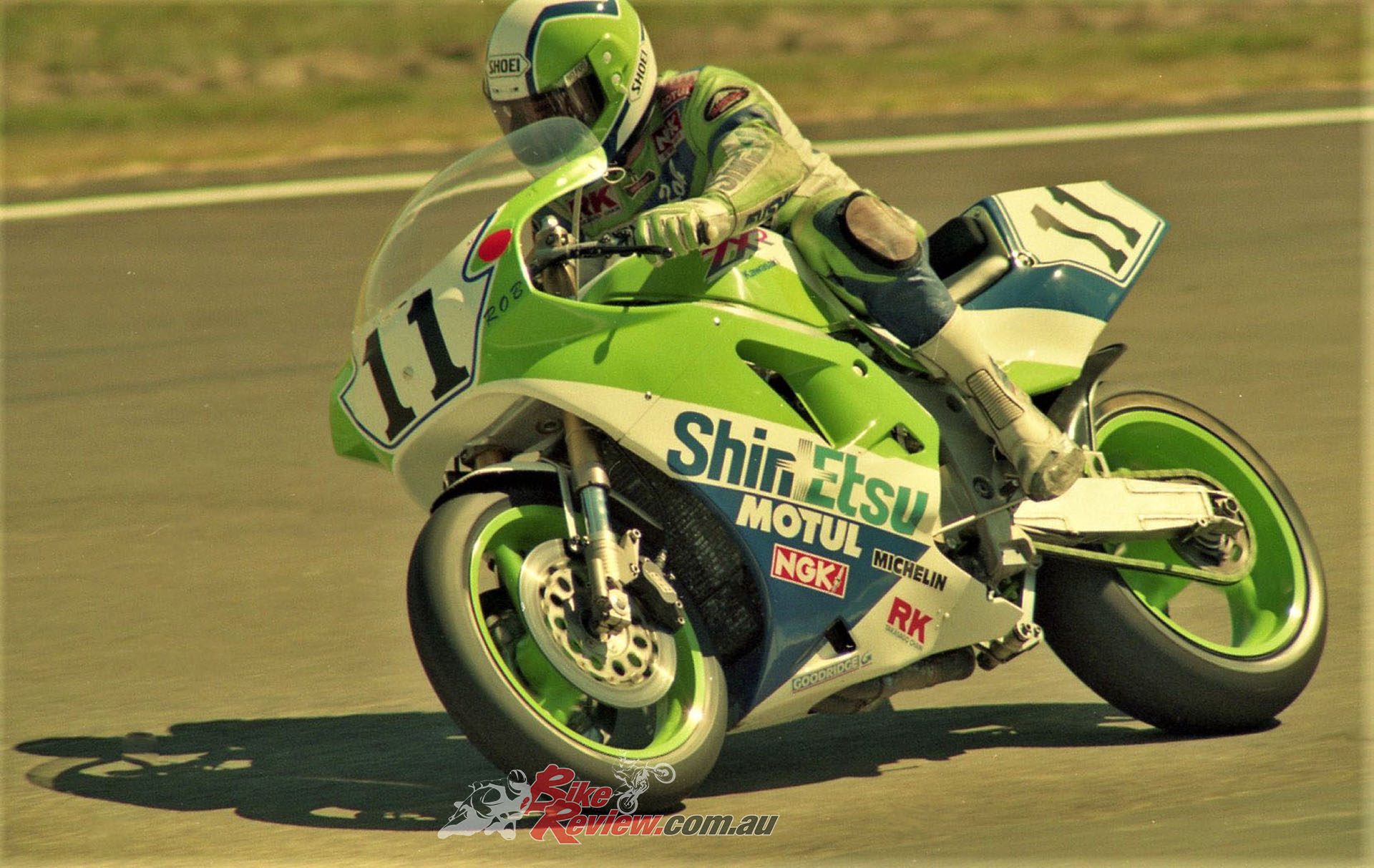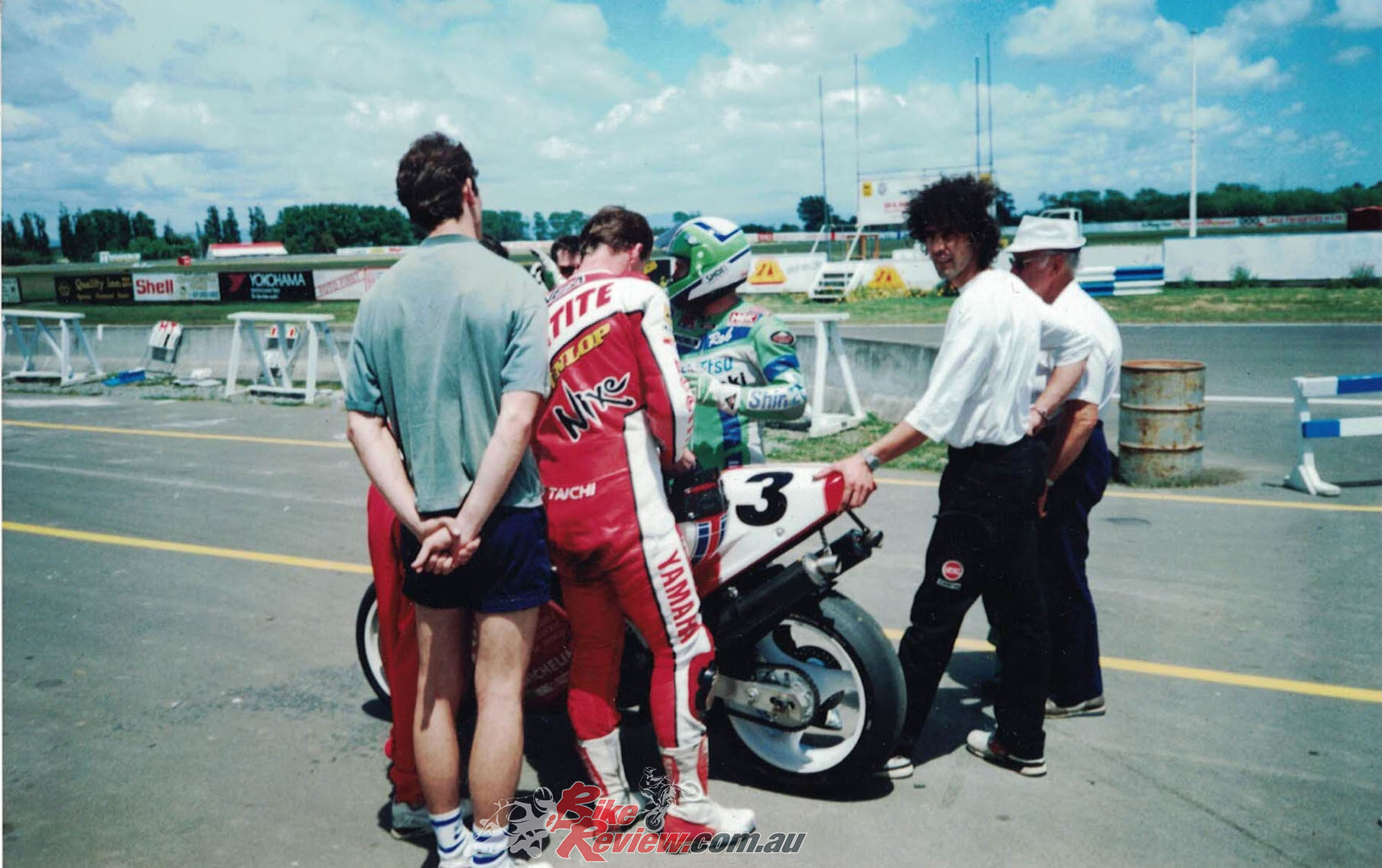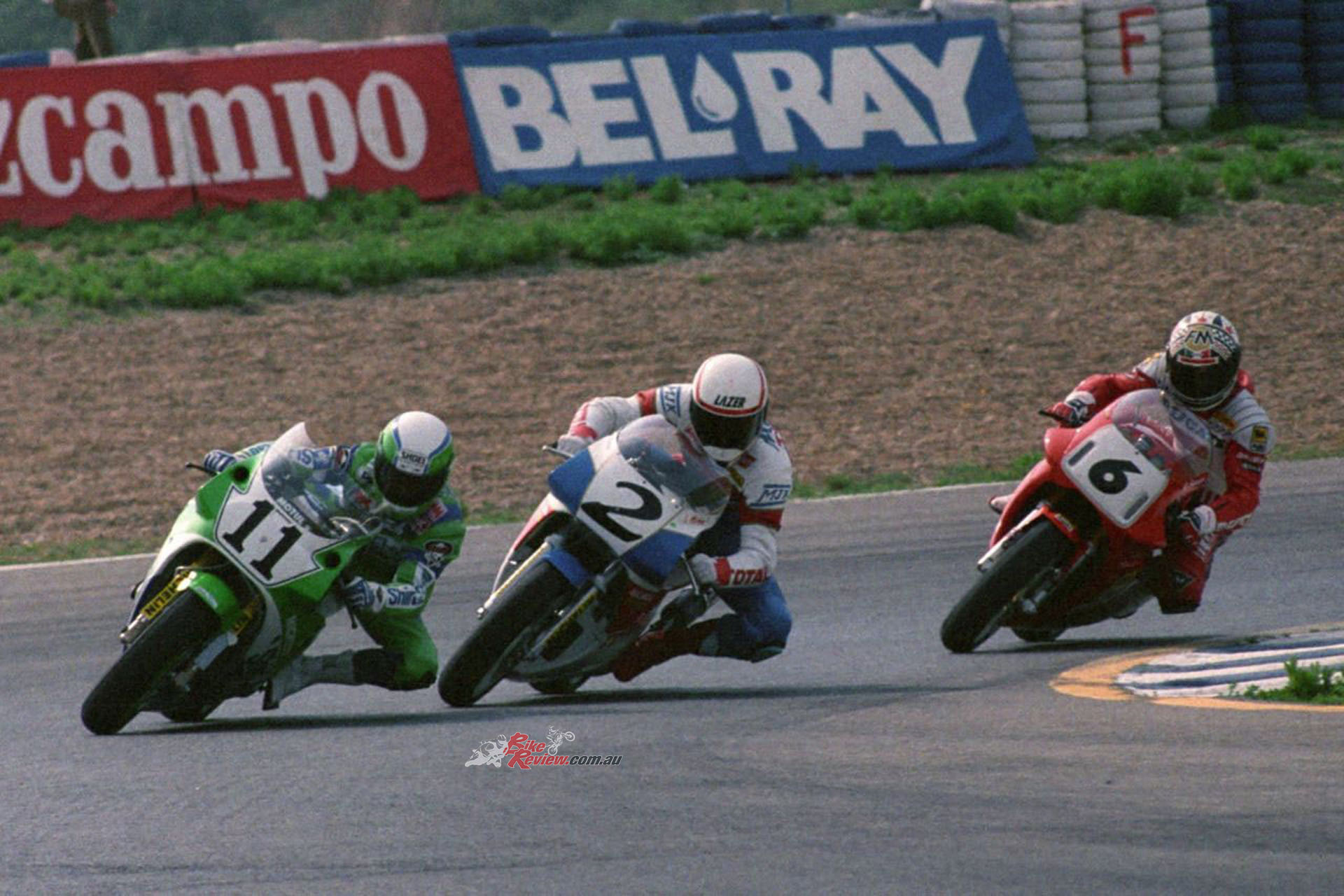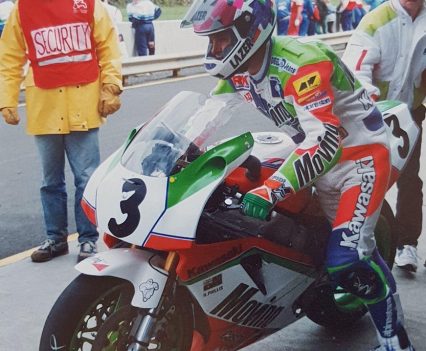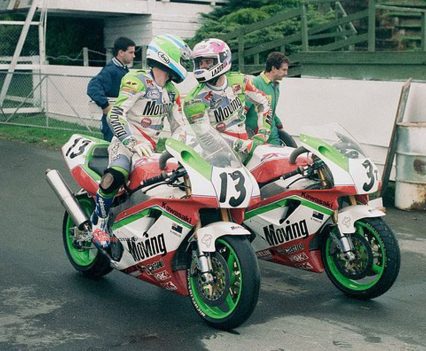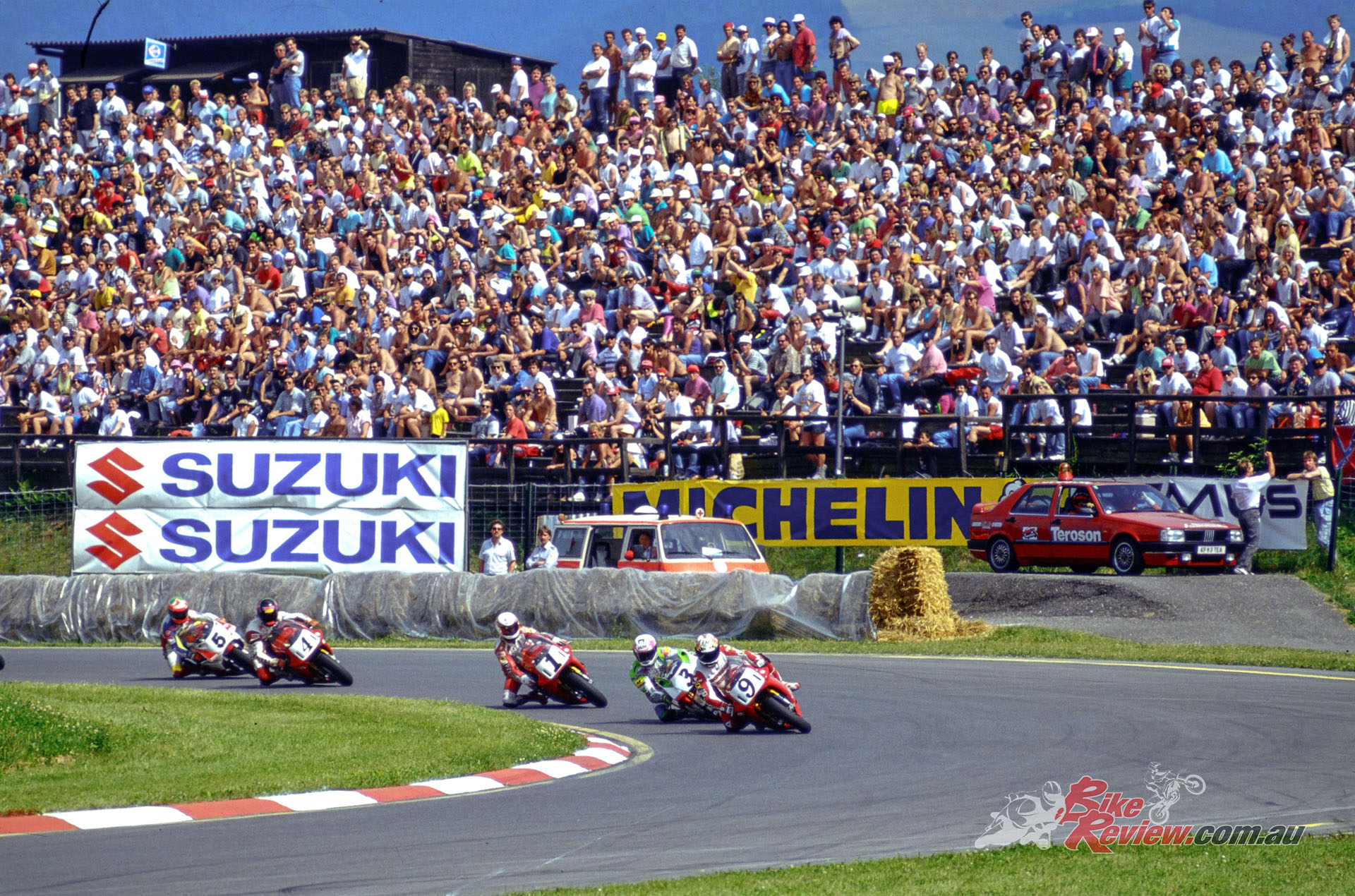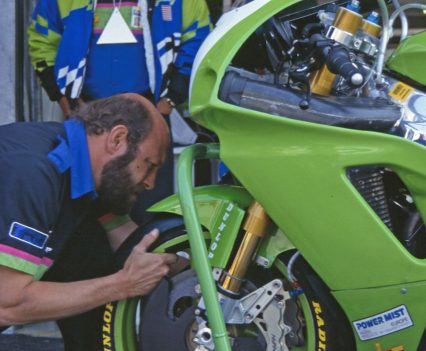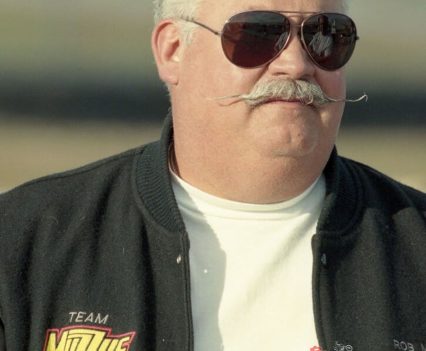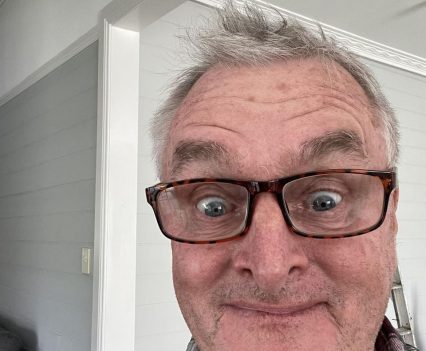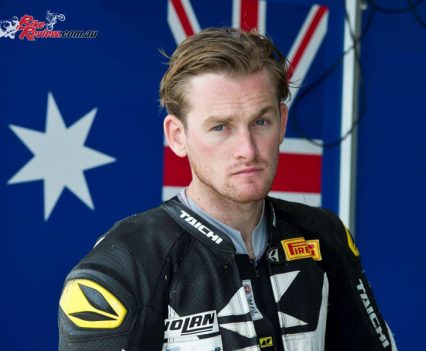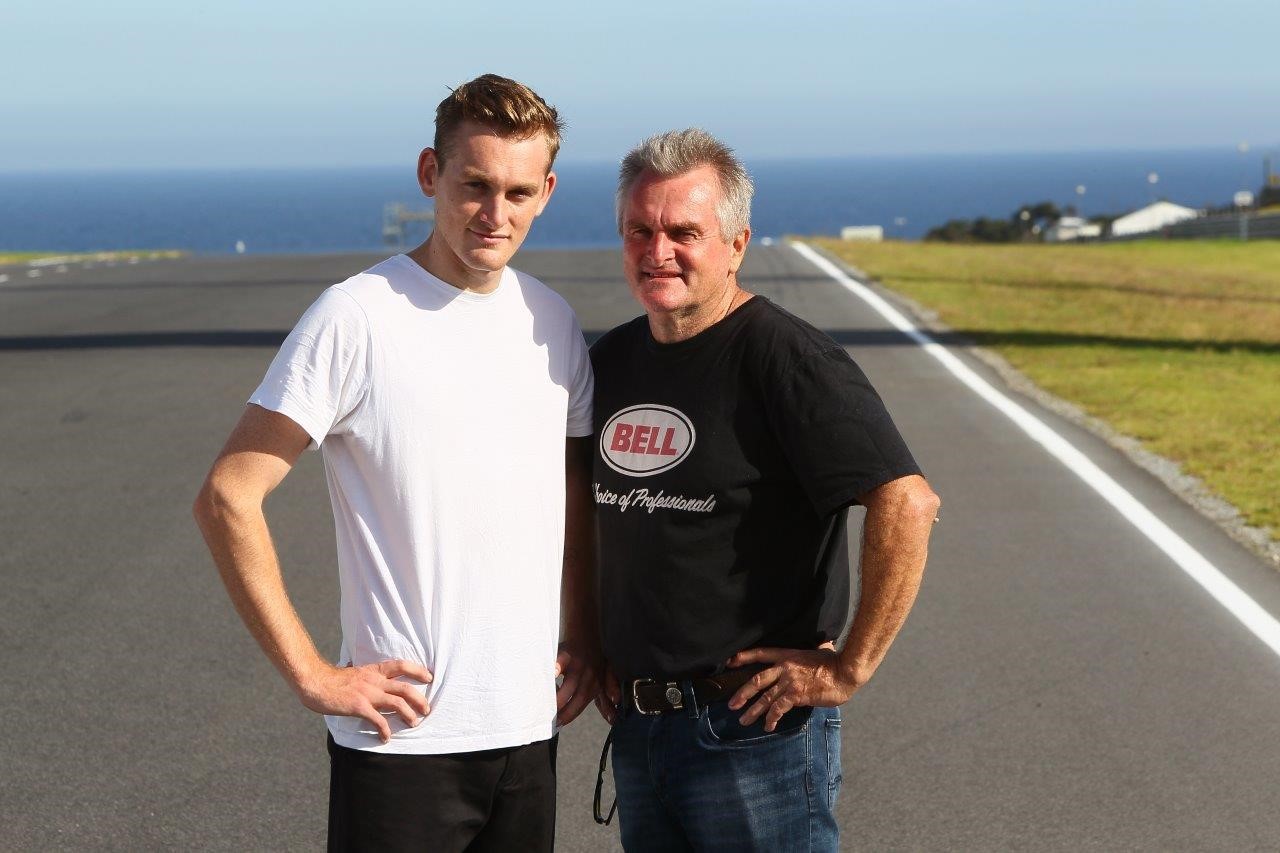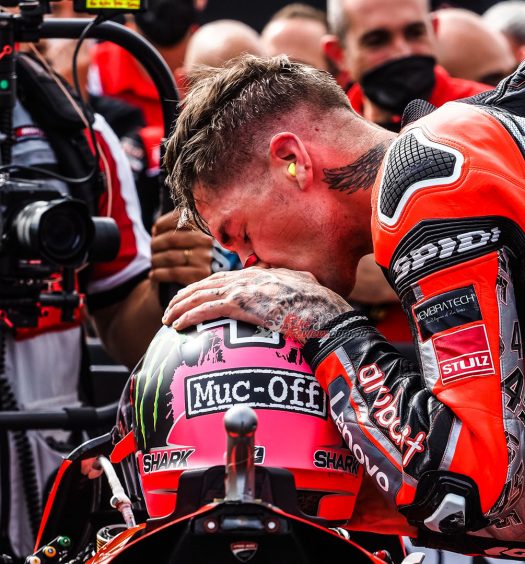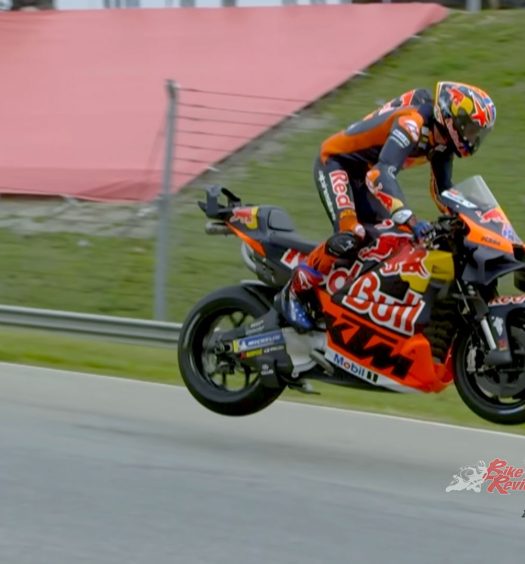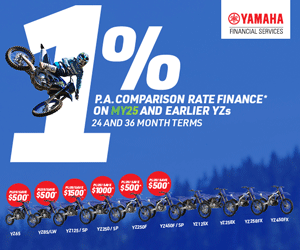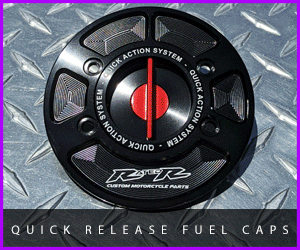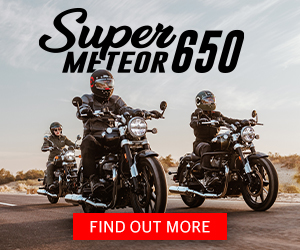Rob Phillis is an Aussie legend who made WorldSBK a seriously exciting watch in the '80s & '90s. Mav runs us through his life in this multi-part series... Photos: Phillis Archives
Rob Phillis’ sublime road racing talent was never in question, but he required a stabilising force to consistently bring his brilliance to the fore. Enter Melbourne motorcycle dealer Mick Hone to help launch Rob into the next stage of his lustrous career…
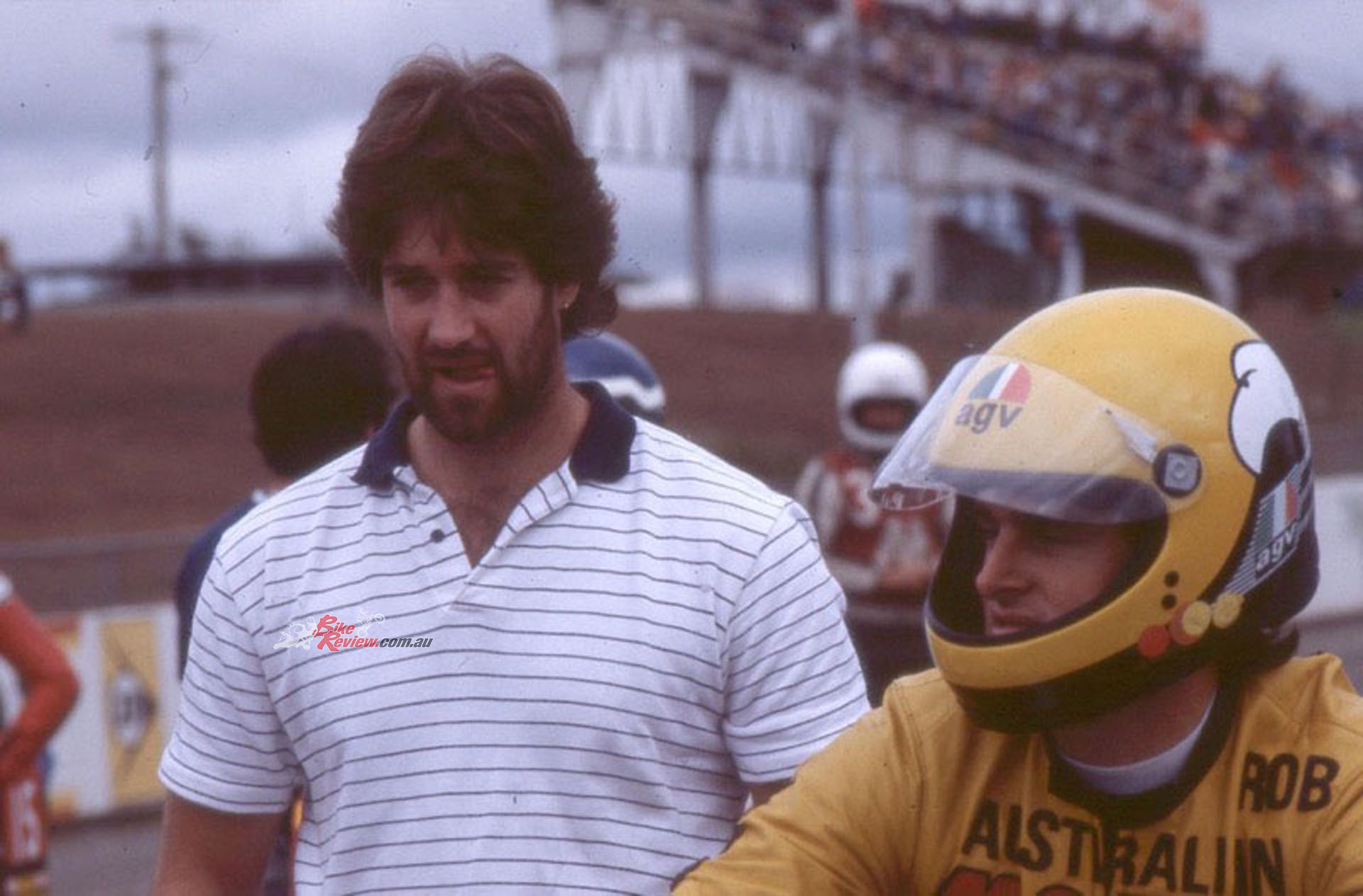
Rob Phillis’ sublime road racing talent was never in question, but he required a stabilising force to consistently bring his brilliance to the fore. Enter Melbourne motorcycle dealer Mick Hone…
Rob Phillis has always been a larger-than-life character who has enjoyed himself as much away from the racetrack as on it. That sentiment that not many people will disagree with – especially his family, mates, teammates and opponents who have spent plenty of time with the loveable Wagga-born larrikin.
Check out part one of our Phillis feature…
The majority have had to sit through Rob’s never-ending ‘ideas factory’ where schemes to make money via unorthodox means or build weird stuff were regularly canvassed. Often, it was just easier to give them the nod of approval, but certainly, some creations – such as his camping shower and Mazda 626-powered, jet boat– were ahead of their time! His mind was always in thinking mode, and about the only time he sat on the couch was to watch his favourite actor – Animal from The Muppets – on the box.
The above is probably a nice way of saying that Rob’s focus and priorities could, err, occasionally go off on tangents – and that was perhaps an apt way to describe his motorcycle racing career before he hooked up with Melbourne-based motorcycle businessman Mick Hone at the tail end of 1980.
“The majority have had to sit through Rob’s never-ending ‘ideas factory’ where schemes to make money via unorthodox means or build weird stuff were regularly canvassed.”
Hone was already going gangbusters as the proprietor of his eponymous Suzuki dealership in Box Hill, while Rob had already proven himself to be one of the most gifted riders in the country but without the tools of the trade, vision and support to really lift him into the elite category. That was soon to change. The collaboration began when Phillis teamed up with Hone – a seriously fast rider – to contest the 1980 Coca-Cola 800 endurance race – an event open to all sorts of machinery, from production to F1.
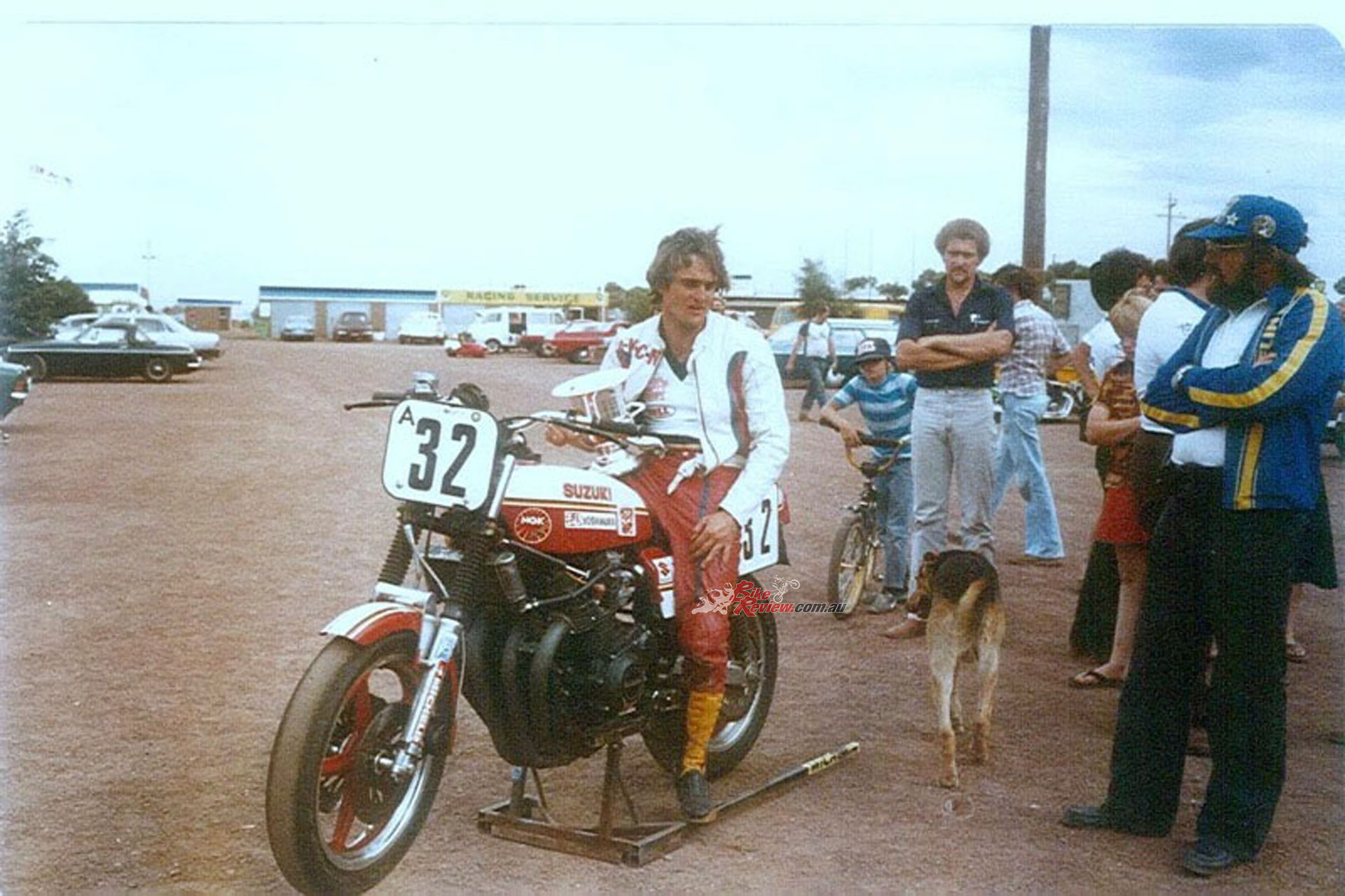
The collaboration was an instant hit, with Hone’s business dexterity and exquisite machine preparation providing Phillis with the tools of trade and confidence to go out and do the business.
“I still remember that event well,” said Phillis. “We were riding Mick’s GS1000, which was a horn bike, but Mick was as slow as a wet weak! We DNF’d with a carby problem, but after that event, I was offered a full-time ride with the team in 1981. At the same time, Mick also hired Dave’ Dragman’ McGillivray to build a new GSX1100, with Alan Pickering the engine guru. I raced GS1000 to start with at Calder before the GSX11000 was ready. It was an unbelievable year, and I won the NGK Superbike Series as well as plenty of other one-off events.”
“I won $14,750 in prizemoney that year, with all of it deposited at an ANZ branch in Box Hill by Mick! At the end of the season, I was able to put a deposit on a $29,000 house in East Albury, buy Dragman a new stereo and Alan a remote-control helicopter – I later bought one for myself in Japan – and paid back my mate’s mum Edna Gow, who had lent me $2000 to buy a TZ350E in 1978.”
Phillis’ heroics on the GSX1100 were already helping him become a household name, especially as the popularity of grand prix racing was waning and Superbikes became the media darlings. During the Winton rounds of the championship, it felt like half of Albury would make the one-hour trek south on the Hume Highway to watch Rob in action – and in most cases, they’d head home not only extremely well-hydrated but happy campers as well as Phillis was always fast around the tight and twisty layout.
Rob also had a constant companion around that time: his beautiful but occasionally snarly German Shepherd, Floyd, who once scored a page three photo in Melbourne’s Sun newspaper taking a ride on Rob’s GSX1100 at Calder Park Raceway. Except the story called him Lloyd…
Floyd then joined Rob and a couple of mates in Rob’s beloved lime green EK ute – initially owned by his grandmother – for an end-of-year race meeting at McNamara Park in Mt Gambier, but he was a farting machine the whole way! Rob cleaned up at Mac Park, by the way…
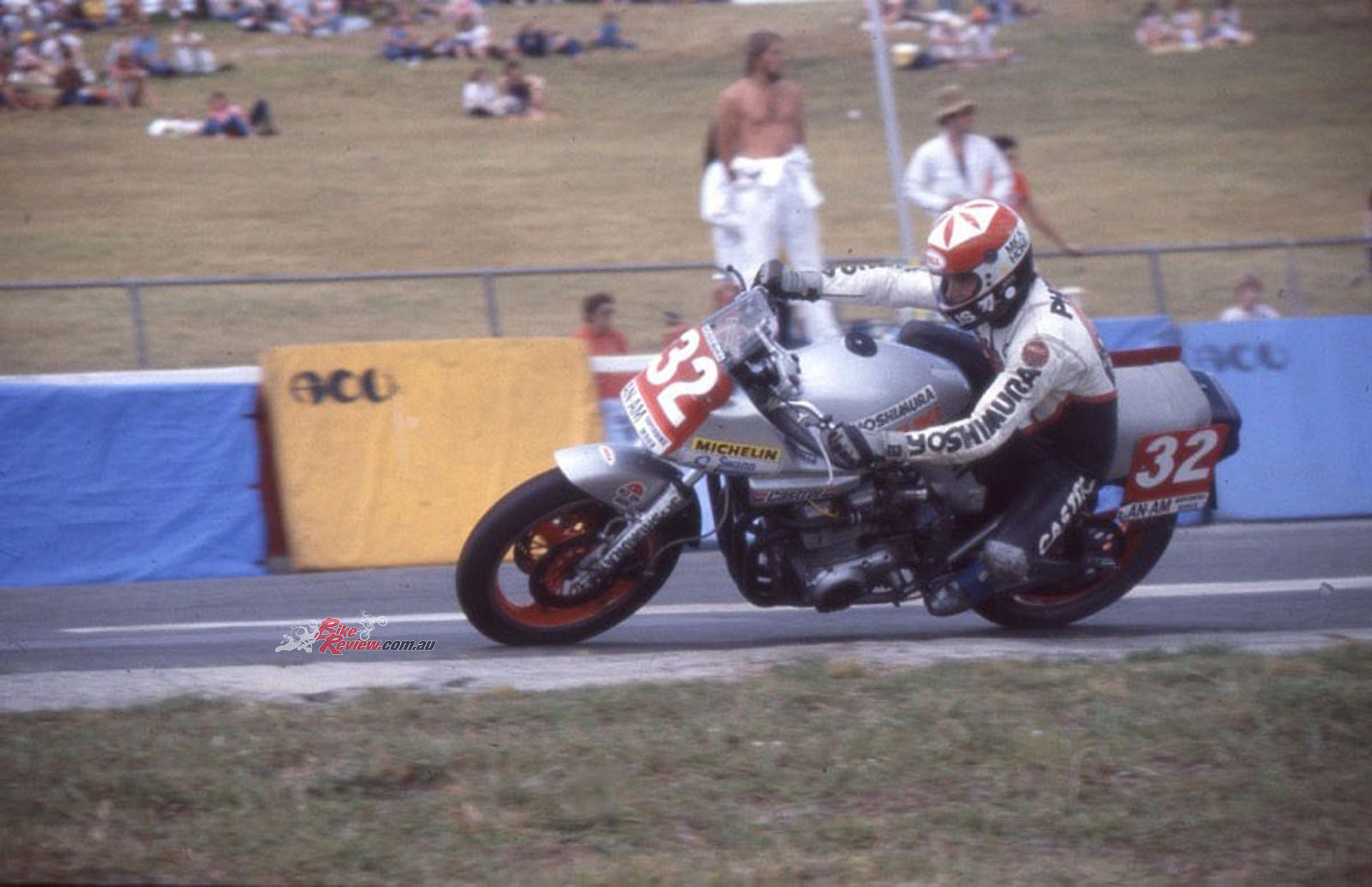
In 1982, the Katana came along, but it was basically the same bike as the GSX1100 except for the bodywork.
“In 1982, the Katana came along, but it was basically the same bike as the GSX1100 except for the bodywork,” says Rob. “We ran a McIntosh swingarm and Kayaba forks, and I won both the Victorian and NSW Superbike titles that year, and then the 1983 (Katana) and 1984 (Suzuki GSX1100EFE, which still sits in Mick Hone’s shop) Superbike titles as well.”
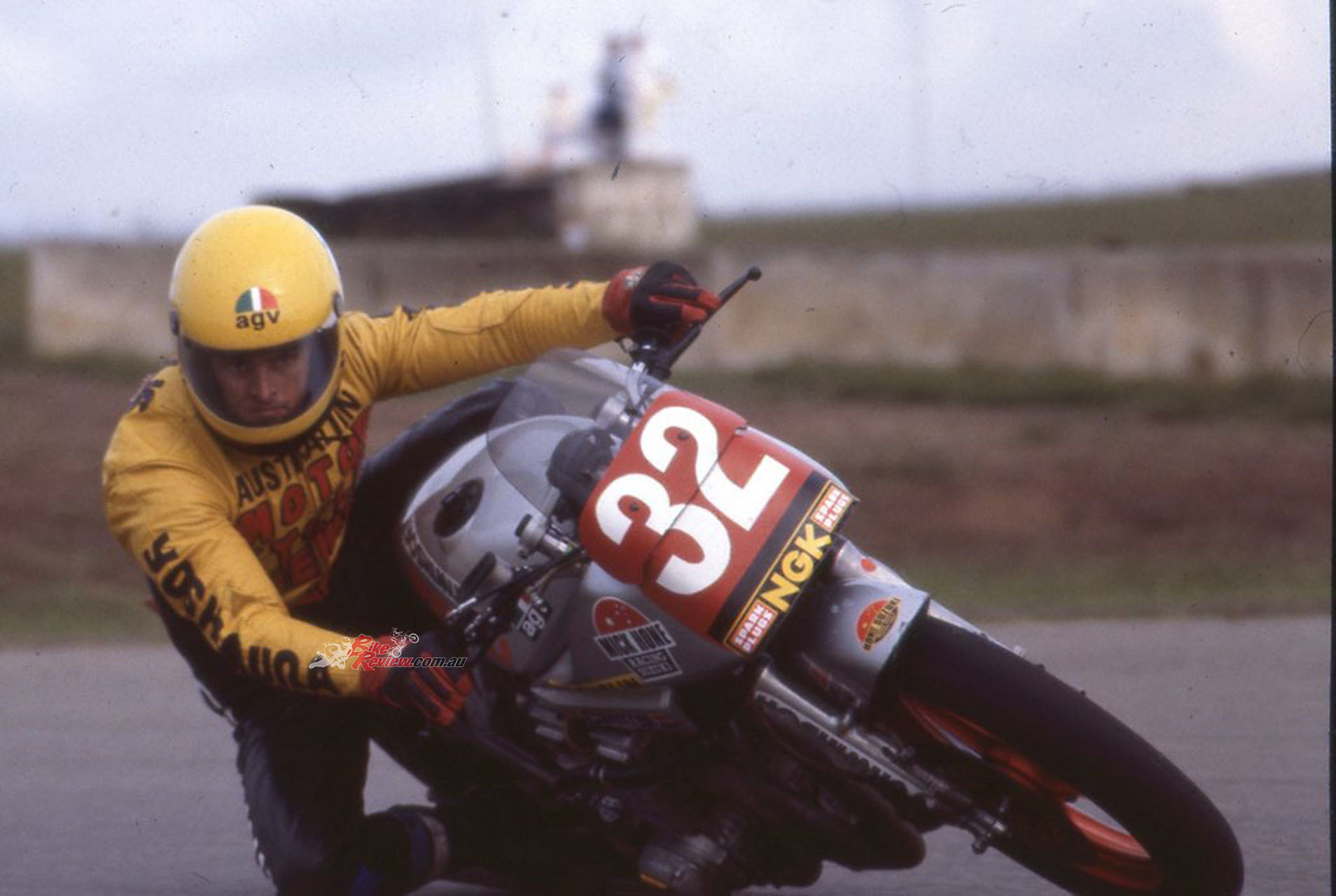
“I won both the Victorian and NSW Superbike titles that year, and then the 1983 (Katana) and 1984 (Suzuki GSX1100EFE, which still sits in Mick Hone’s shop) Superbike titles as well.”
And sponsorship for the team was coming from all angles during that period, including Penthouse magazine and the famed Holden Dealer Team (Hone was great mates with HDT honchos Peter Brock and John Harvey).
Phillis’ great mate now owns the GSX1100, Roger ‘Spud’ Arnold, an avid collector of cars and motorcycles. Spud also owns the immaculate TZ750 that Phillis campaigned for Milledge Yamaha in 1979, which brought him second place in the Unlimited race at Bathurst behind Graeme Crosby.
Spud’s collection also includes the Suzuki XR69 F1 bike, which Rob previously raced – and crashed at Lukey Heights – in the Island Classic at Phillip Island, and which has recently been the mount of Rob’s son, Alex. Meanwhile, Rob owns the Kawasaki KX250 that he made his road racing debut in 1975.
In 1983, Phillis’ extraordinary natural talent came to the fore at three events in particular: the Castrol 6-Hour, Arai 500 at Bathurst and the Suzuka 8-Hour world endurance race: the first two because of his ability to go blindingly fast with zero preparation, and the latter for really announcing himself on the world stage – although he had previously raced and won in New Zealand and as a ‘rebel’ in South Africa during the apartheid era.
Phillis arrived at Bathurst expecting to focus solely on riding his RGV500 GP machine, which Hone had purchased for him. Still, he also easily won the prestigious Arai 500 endurance race after a last-minute opportunity from Team Honda – the arch-rival at that stage – to ride its RS1000R F1 machine, which was sitting in the garage after Malcolm Campbell and Andrew Johnson chose to compete on their RS860 Superbikes instead.
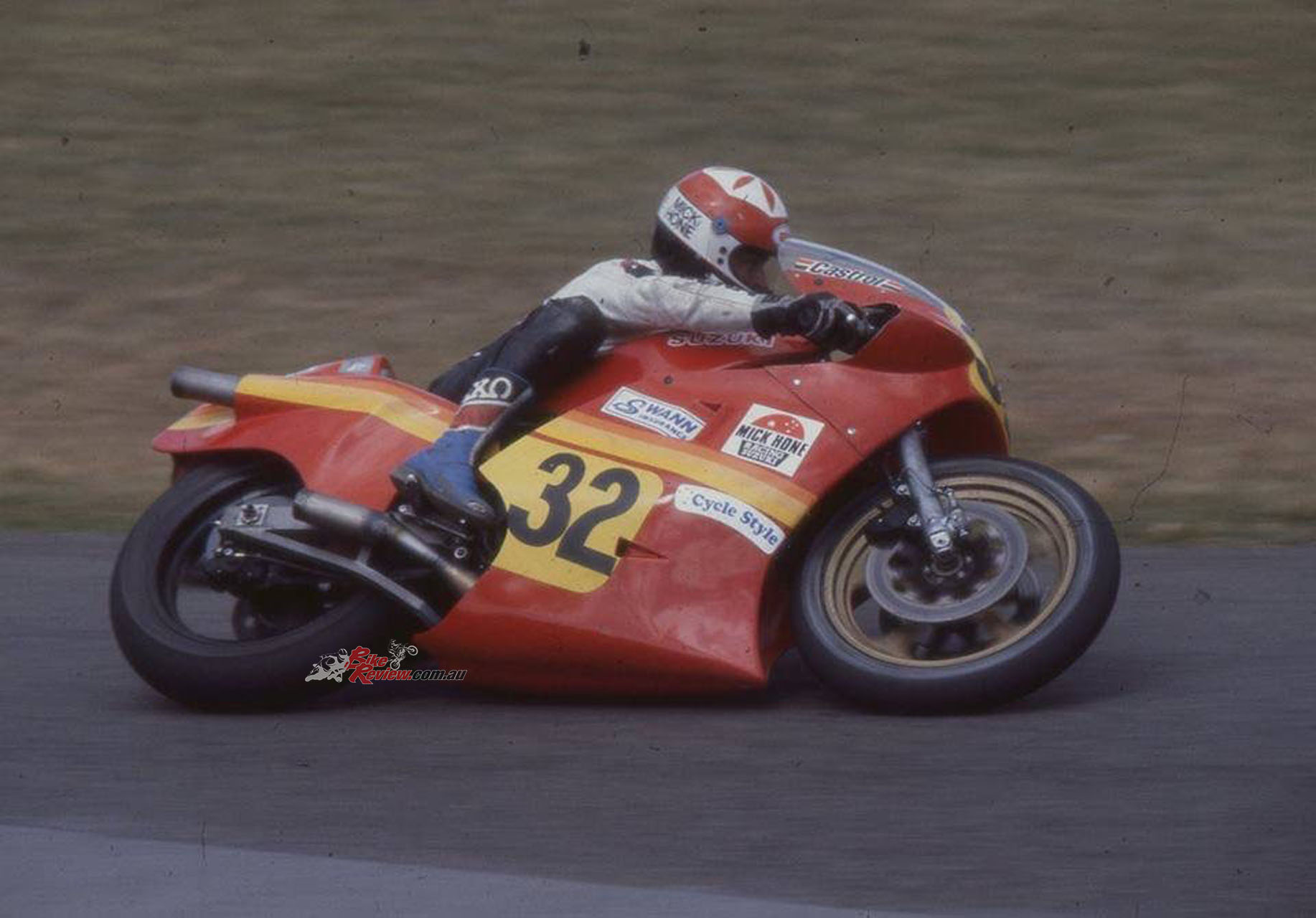
Phillis arrived at Bathurst expecting to focus solely on riding his RGV500 GP, which Hone had purchased for him.
Phillis’ first ride on the RS1000R was on the warm-up lap, and from the get-go, he was battling with his ‘teammates’. Johnson and Campbell both had issues which allowed Phillis to win in a canter. In the process, he also wore away all the skin on the top of his left toe, changing gears. Stubbing the said toe that night while watching Cold Chisel belt out tunes on the top of Mt Panorama wasn’t ideal…
The Castrol 6-Hour followed a similar last-minute narrative. “Me and Geoff French finished second in the race on the Matich VF750F behind Wally and Rod Cox. I was meant to be the reserve rider and watched on all week before qualifying second behind Wally after only a few laps – after which South African Dave Petersen then became the reserve. The team fitted colder spark plugs and, combined with the frozen fuel Matich was using, the bike was flooding during every pit stop and we lost well over a minute trying to start it. Extremely frustrating.”
That meant Phillis had to ride flat knacker all day, and he rode out of his skin: just so fast and smooth. Crosby couldn’t hang tough with Phillis: he fell off dicing with him during the middle stages of the event. A few months earlier, Phillis had teamed with Crosby in his first Suzuka 8-Hour, and the pair was leading on the Yoshimura Suzuki at the halfway mark before retiring with a mechanical gremlin. Phillis impressed all and sundry with his speed, smoothness and mechanical sympathy, and he then returned to Japan later in the year to win the 1000cc Japanese GP for Moriwaki.
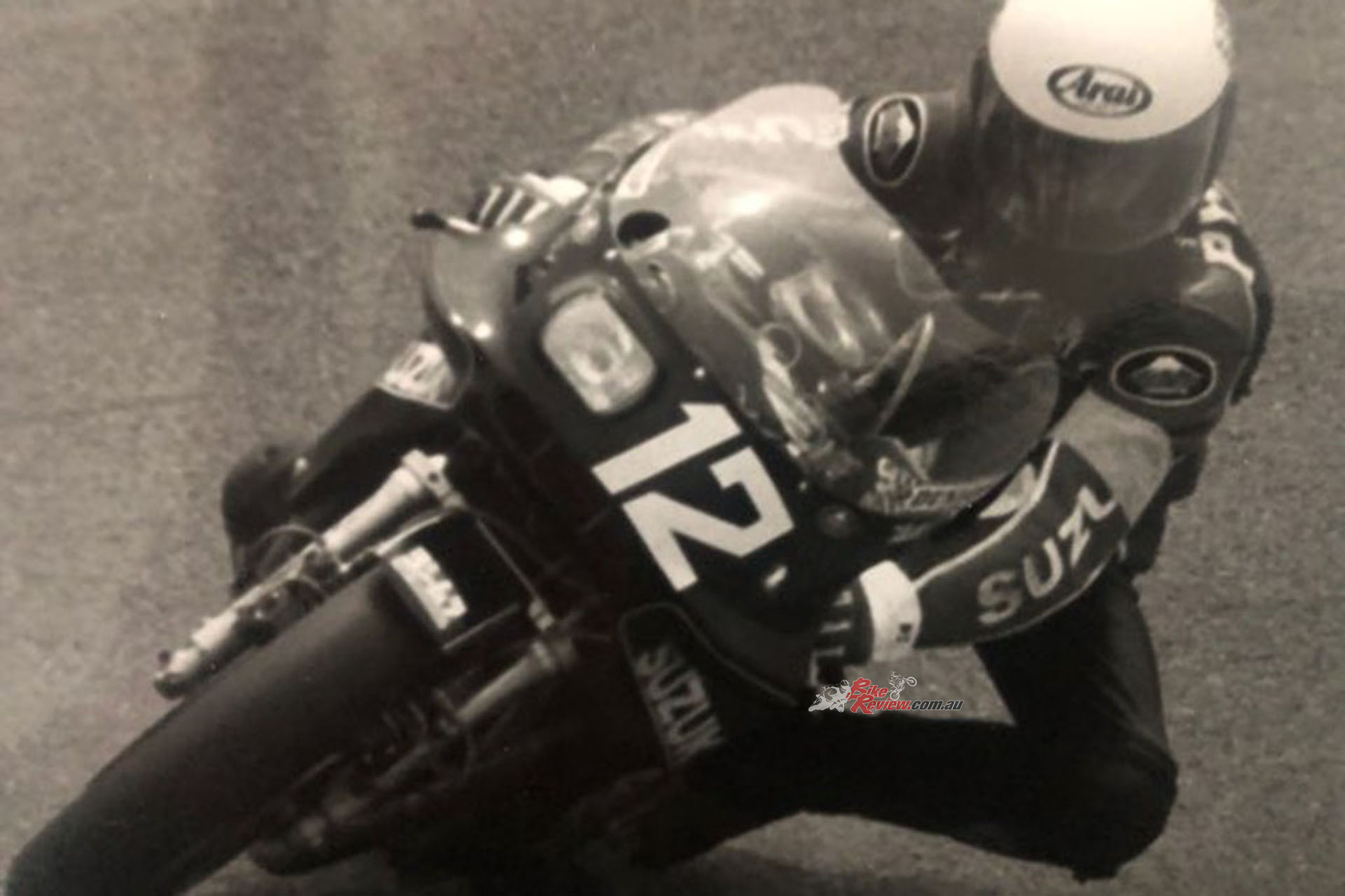
Phillis racing at the 1983 Suzuki 8-hour. One of the most talked about international events of the era.
Unlike his countrymen: Kevin Magee, Mick Doohan, Wayne Gardner and Daryl Beattie, the Suzuka 8-Hour never saw the best of Phillis, thanks to a mix of crashes, mechanicals and crappy bikes – like the Honda VFR750R he rode in 1986 alongside South African legend Kork Ballington. At least there was some consolation that year with one of the snappiest team names: Pair Slope with B!
Unlike his countrymen: Magee, Doohan, Gardner and Beattie, the Suzuka 8-Hour never saw the best of Phillis, thanks to a mix of crashes, mechanicals and crappy bikes.
It was the same deal for Phillis in the local Swann Series, where he often rode his Superbike against fully fledged GP machinery from the likes of Gardner, Campbell and Rob McElnea. His best chance of success came in 1988 with Kawasaki’s F1 machine. He won both legs ahead of Doohan – who had swept all before him in the WorldSBK round just a few months before – and Michael Dowson before crashing at Lakeside and damaging the little finger on his right hand. He gritted his teeth and rode the week after at the fully refurbished Phillip Island, but his DNFs at Lakeside cooked his goose.
In the final round of the 1985 Swann Series at Surfers Paradise, Phillis scored a ride on the Roberto Gallina Suzuki RGV500 but crashed out after a collision with Dowson (Yamaha TZ750) in race one just as he was starting to really get into the groove. Rob would reunite with Gallina a year later at Misano in Italy, but more on that later. Rob did enjoy hosting international guests during the Swann Series, and once, he took a group of riders and journos out in his new pride and joy – an army troop carrier – into the steep hills outside Wodonga.
“It was a horn truck, a 1964 model cab-over Acco that I bought at an auction in Bandiana for $5k to use as a backup vehicle for a motorcycle tour company that I was starting. I took McElnea, (commentator) Peter Clifford, Buster (former Aussie 125 GP champion Ian Saunders) and a few others out for a spin. They are seriously steep hills, and I scared the hell out of all of them – and it wasn’t the first time that McElnea said I was ‘bloody mad’.”
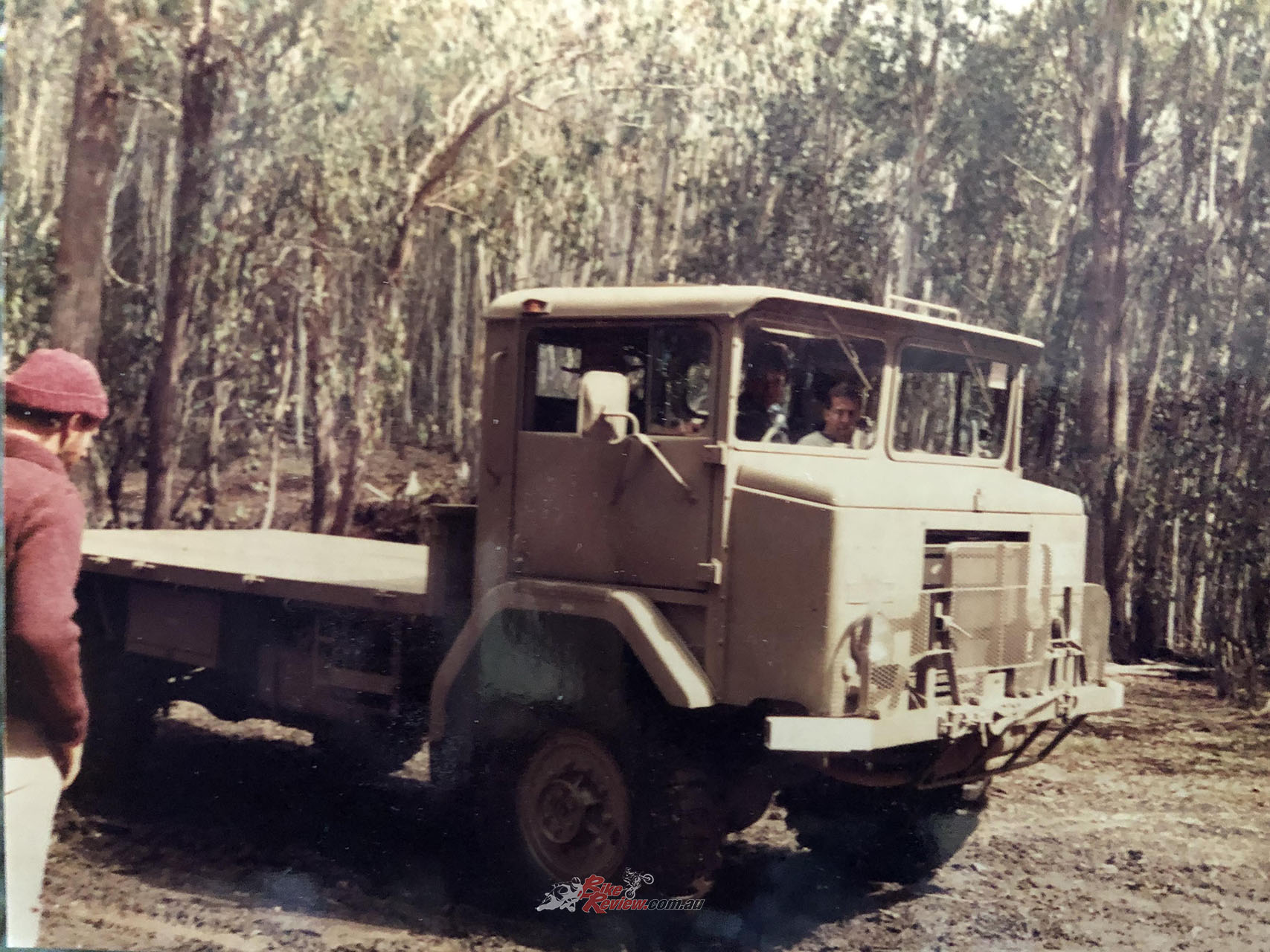
Rob did enjoy hosting international guests during the Swann Series, and once, he took a group of riders and journos out in his new pride and joy – an army troop carrier – into the steep hills outside Wodonga.
That became a standard McElnea refrain when the two competed against each other in WorldSBK – where Phillis also became good friends with another Pom, Terry Rymer. The Acco was also used to start a fledgling jet ski hire business on the banks of the Hume Weir. It was a mild success until the local council got wind it was running without permits…
After his excellent form in the land of the Rising Sun in 1983, Yoshimura made overtures to sign Phillis to a Japanese campaign in 1984. Still, the ride eventually went to brash American Kevin Schwantz. Instead, Phillis remained in Australia and, as well as his Superbike duties with Hone, he also joined Team Kawasaki Australia to race a GPz900 in production racing. Phillis and his teammate, the late Iain Pero, were leading the Castrol 6-Hour when they retired with gearbox problems.
That year, Phillis also starred in a global promotional video for the GPz900R. He was filmed riding over the Sydney Harbour Bridge while gorgeous women swooned as he rode through the Sydney CBD. The video then finished up with some footage at the Dubbo Zoo. As you do….
Some of his television interviews during that time are the stuff of legend, from simply not understanding the question (he hated “big words”) to going off in all directions.
Some of his television interviews during that time are the stuff of legend, from simply not understanding the question (he hated “big words”) to going off in all directions. It wasn’t anything premeditated, though: Rob was the real deal, foibles, honesty and all. And a genuine warmth as well – what you saw is what you got.
In 1985, the Phillis family, then Rob and wife, Carol, grew with the addition of Georgia in 1985 – announced by a wildly excited Will Hagon on the ABC coverage of a Superbike round – and then Tom and Alex arrived in 1988 and 1994, respectively. Tom’s near death from SIDS when he was six months old was a sledgehammer for the whole Phillis household. Tom’s immediate treatment was intense, but he made it through and, while unable to lead an independent life of his own, has taken great joy in sharing and immersing himself in a range of family activities. And Tom loves camping and quad biking – which Rob has been able to supply in spades. Rob is a wily camping veteran, and his homemade shower is a sight to behold. Some of his camping tricks are best left unspoken, however…
Back with Mick Hone across both Superbike and production in 1985, Phillis won the Adelaide three-hour on the all-new GSX-R750 – its first win anywhere in the world.
“I rode it to Adelaide and ran it in, but I was pinged for speeding in Magoo’s (Kevin Magee’s) hometown – Horsham. I was doing 160km/h and disqualified from riding for three months. We didn’t have spares, either, but it all turned out for the best.”
Check out our Magee Legends story here…
Magee and Phillis became very close, with the ‘Horsham Hurricane’ becoming Tom’s godfather – and he provided a glimmer of joy for the Phillis family when he won the 1988 Spanish GP at Jarama while Tom was being treated in Royal Children’s Hospital. In 1986, Phillis won back the Superbike title from his arch-rival Campbell, as well as finishing third in the TTF1 round at Misano on his Aussie Superbike.
“I learnt the circuit on an RGV500 Gallina lent me, and my times were good enough to put me on the front row for a 500 GP race that weekend won by McElnea. Kel Carruthers was there, and it was a big deal to meet him – a legend. Kel was really friendly and helped me weld on an addition to my tank where the airbox had sat – it was a 200-mile race, so the few extra litres were valuable. Kel had the hammer and me the welder. I finished third behind (Marco) Lucchinelli and (Anders) Andersson after Joey Dunlop ran out of fuel on the last lap while in the lead.”
His return to TKA in 1987 began to lay the foundations for becoming a full-time WorldSBK rider, with the production-based series inaugurated in 1988. Among the highlights in 1987 included second places in the Superbike series and the Australian Grand Prix at Winton (where he rode on radials for the first time), and in 1988, the Endurance and 1000cc Aussie titles – all aboard the obedient but rather plump GPX750, which Phillis constantly squeezed everything he could out of with typically steely resolve.
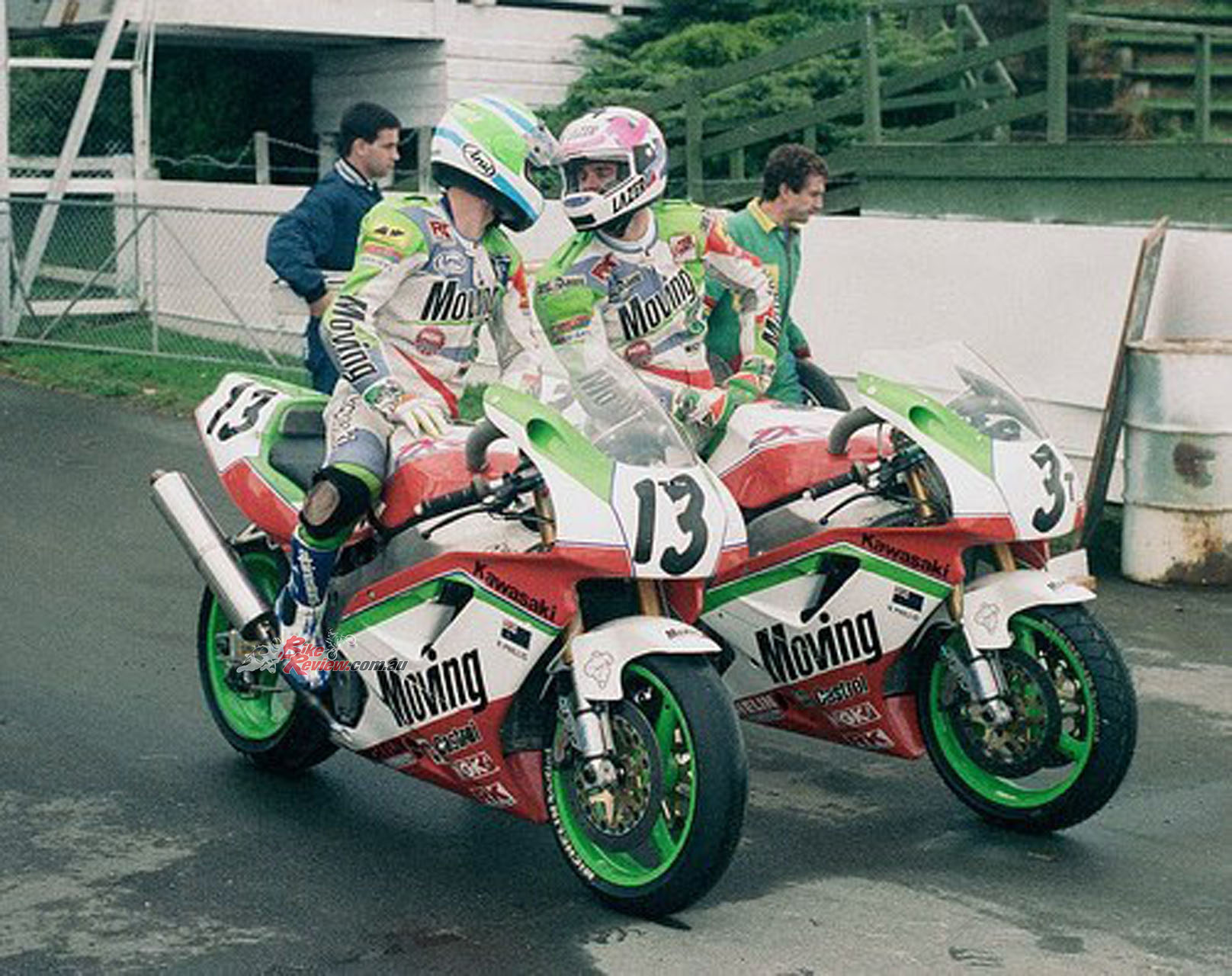
Rob Phillis and Aaron Slight in 1992 on the WorldSBK Kawasaki ZXR750’s in 1992, Slight’s first full season…
In 1989, he ditched the GPX750 for the all-new ZXR750 and also had a new teammate in talented New Zealander Aaron Slight, who settled in Albury with his partner Megan and was soon ‘indoctrinated’ into the unconventional but always enterprising Phillis way of life. The families both bonded, and Slight eventually joined Phillis full-time in the 1992 WorldSBK title on the factory Kawasakis a year after winning the Australian Superbike Championship.
In 1988, Phillis and Campbell were desperate to get amongst the WorldSBK action, and fittingly made their debuts with self-funded trips to round four in Austria. They also competed in the Japanese (Sugo), Australian (Oran Park) and New Zealand (Manfeild) legs. Campbell, in particular, stunned the internationals in Austria when he finished third in race one on his RC30, while Rob was also in the thick of it on his GPX750. Rob can’t speak highly enough of Campbell, who was undoubtedly his most enduring rival – with “Doohan the toughest”.
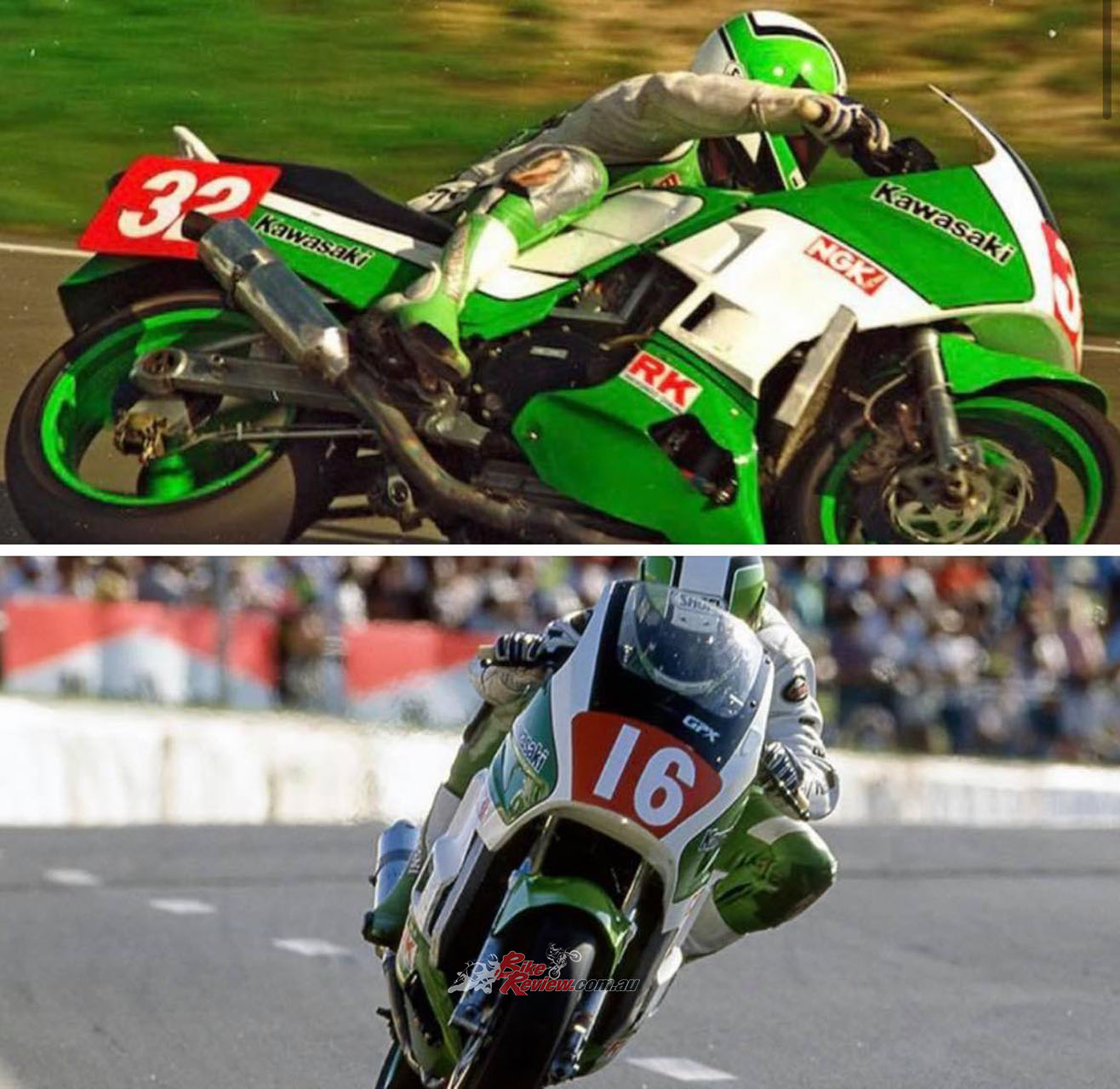
Robbie on the Kawasaki GPX750 WorldSBK bike. That bottom photos is from when WSBK came to Oran Park!
Phillis finished equal sixth in the 1988 WorldSBK title and 11th in 1989 including taking the overall spoils at Oran Park. That was enough to convince Kawasaki’s racing bosses in Japan to flick the international switch: Phillis would be spearheading the company’s assault on the 1990 World title.
“It was a dream come true, and I remember it like it was yesterday,” says Rob. “TKA ran the team, and it was me, Peter Doyle, Mark Woolfrey and John Asher. We were based at Kawasaki Germany headquarters in Friedrichsdorf during the season. It certainly wasn’t a massive lead-in: we only tested at Jerez the week before round one. I qualified in sixth and finished with fourth and fifth places, so I was very happy with that. But we did bugger all testing during the year and had a few electrical problems – faulty spark plug caps – which held us back.”
The lowlights of the year were a massive highside at Hockenheim, which also took out the luckless Campbell, as well as getting pinged by the cops driving a van at 104mph in Minnesota heading to the round at Brainerd. He had to cough up $US380 for bail, but it never went further than that. Two years later, he upped the ante again.
“In 1992, I was towing our caravan at 176km/h in a BMW 535, with a can of coke in one hand, just before the turn off to Nürburgring. Great towing car, that one.”
The highlight of 1990 was his race two victory at Philip Island after a pulsating scrap with Peter Goddard and Campbell. Phillis had really hit some strong form the week before after two second places behind the late Fabrizio Pirovano in Malaysia, and that carried through to Phillip Island and the season finale in New Zealand. During his first season, he had 19 top-10 finishes, five podiums and two wins. It was certainly enough to pique the interest of the Ducati factory squad, then managed by Lucchinelli.
“I tested Roche’s factory Ducati at Manfeild the day after the season finale, and after ten laps, I went as fast as I did in the race the day before on my Kawasaki. Roche and Lucchinelli were both impressed, which prompted Kawasaki to draw up a contract three days later for 1991 to keep me in the fold.”
“Kawasaki originally wanted to put (American Doug) Chandler on the bike after he beat me at Sugo and Brained (America) in 1990, but I got the nod, and I finished third in the 1991 series behind Doug Polen and Roche – and it could have been better had I not crashed on oil in the warm-up in Italy and knocked myself out. I woke up in the Clinica Mobile, so that was it for the day. The races were wet, too, and I was usually pretty good in the rain.”
“My bike was better that year, especially the engine, but it still hard to stay in the Ducati slipstream – and Polen often pinched me on the arse as he motored past me… Imagine how fast Pirovano would have been on a Ducati, as he was about 50kg wringing wet!”
After already proving himself to be in the WorldSBK elite, in 1992, he became an even stronger force and led Polen by 11 points heading into round 12 at Assen. He was fifth in race one and in the restarted race two, was taken out by an overly ambitious Piergiorgio Bontempi.
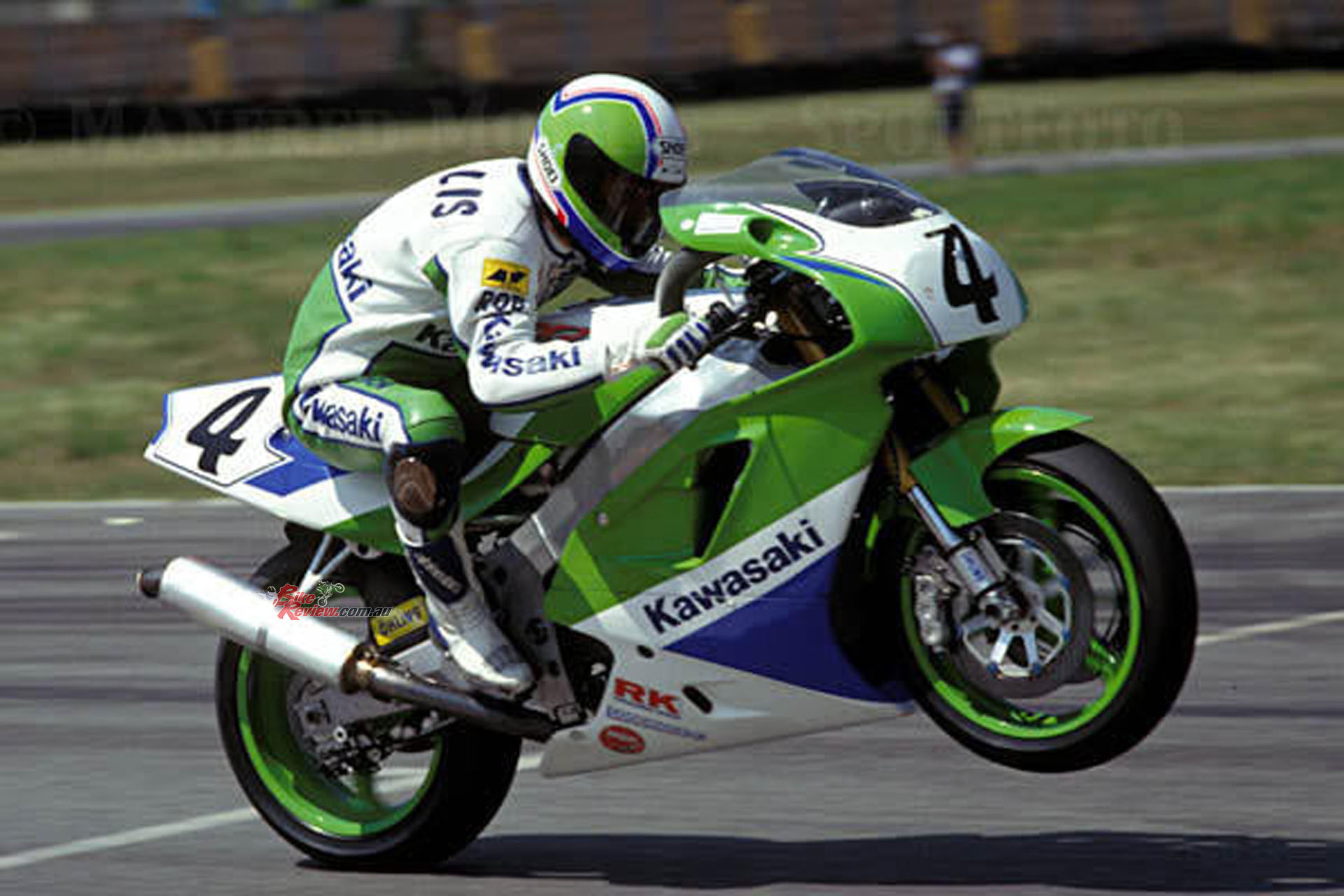
“I tested Roche’s factory Ducati at Manfeild the day after the season finale Roche and Lucchinelli were both impressed, which prompted Kawasaki to draw up a contract three days later for 1991 to keep me in the fold.”
“I was leading race two by five seconds over Falappa when they red-flagged the race. In the restart, I was in second behind Falappa and didn’t need to pass him to take the overall win, but Bontempi had a brain fade in his red mist and hit me up the date into the gravel trap.”
At that juncture, Polen had already retired with engine problems, and if Phillis had made it to the finish line, the season could have taken on a completely different dimension. But it wasn’t to be, and he was again third in the series behind Polen and Roche.
“That was it for my full-time WorldSBK career, as Rob Muzzy took over Kawasaki’s WorldSBK factory offensive from 1993 onwards. I had the chance to sign with Ducati in 1993, with Roche as team manager. But it was taking time, and Kawasaki Australia wanted an answer about me racing back in Australia. I signed with Kawasaki, and then Roche rang me a week later and said Ducati was ready to flick the switch, but it was too late.”
Phillis was confronted with young guns like Troy Corser when he returned to Oz, while over the next few years, he also raced in Malaysia and Germany before he retired from professional racing in 1998. He made a comeback in the classic scene on his GSX1100 and the XR69, but after a big crash on the latter – and another brain haemorrhage, his third – he eventually called permanent time on competition.
He spent large periods of the last decade based in Switzerland while his son Alex competed in the German title, and he now takes a keen interest in the BMX and dirt-track pursuits of his grandson, Freddie Coote. He’s recently had an operation to fuse his left ankle, which he first broke at Oran Park in 1987, to increase his mobility and to help up the work rate on the house he is currently renovating in Corowa. There is lots to still play out for the 67-year-old legend of Australian road racing…
Editor’s Note: If you are reading this article on any website other than BikeReview.com.au, please report it to BikeReview via our contact page, as it has been stolen or re-published without authority.


